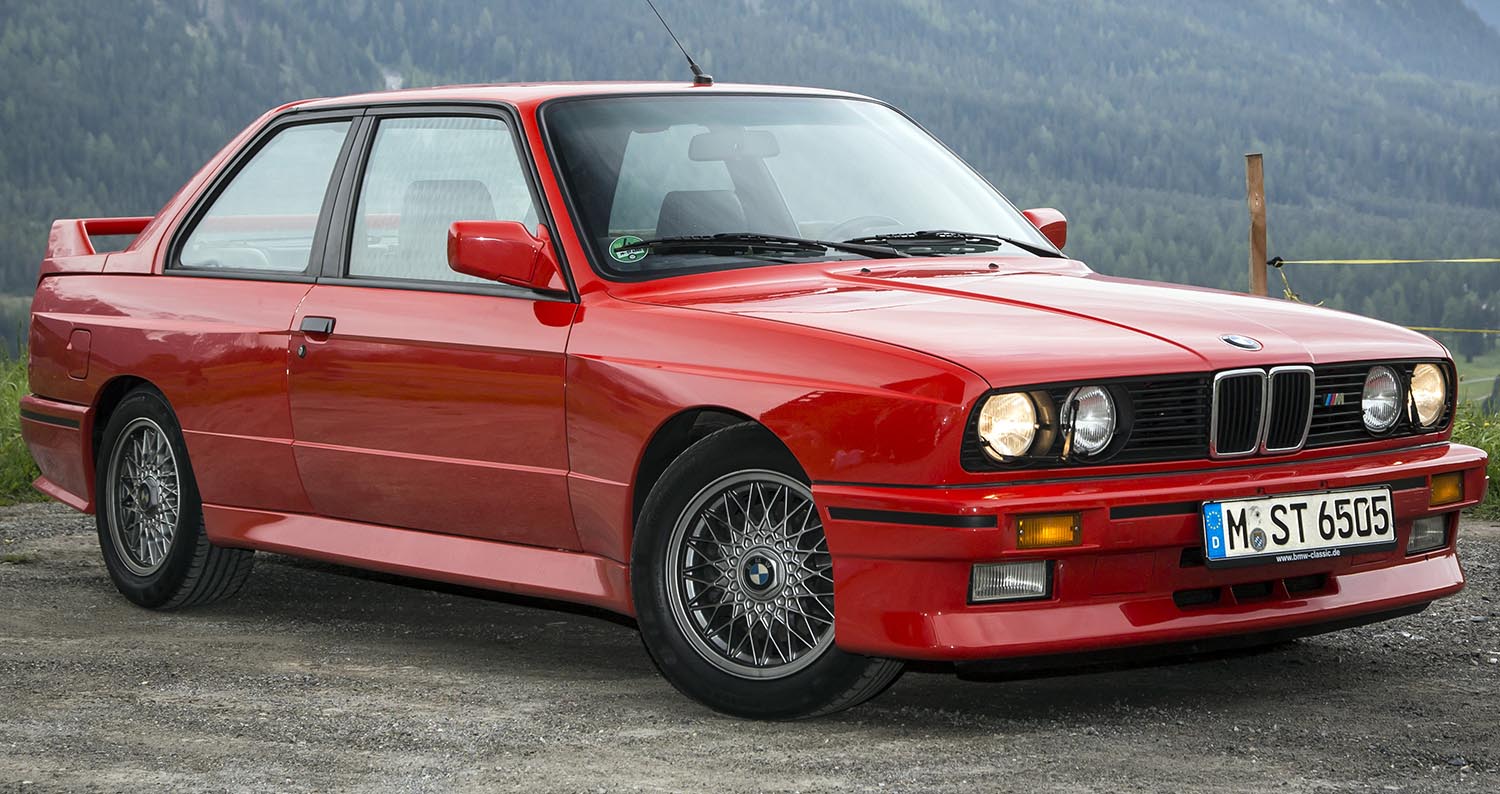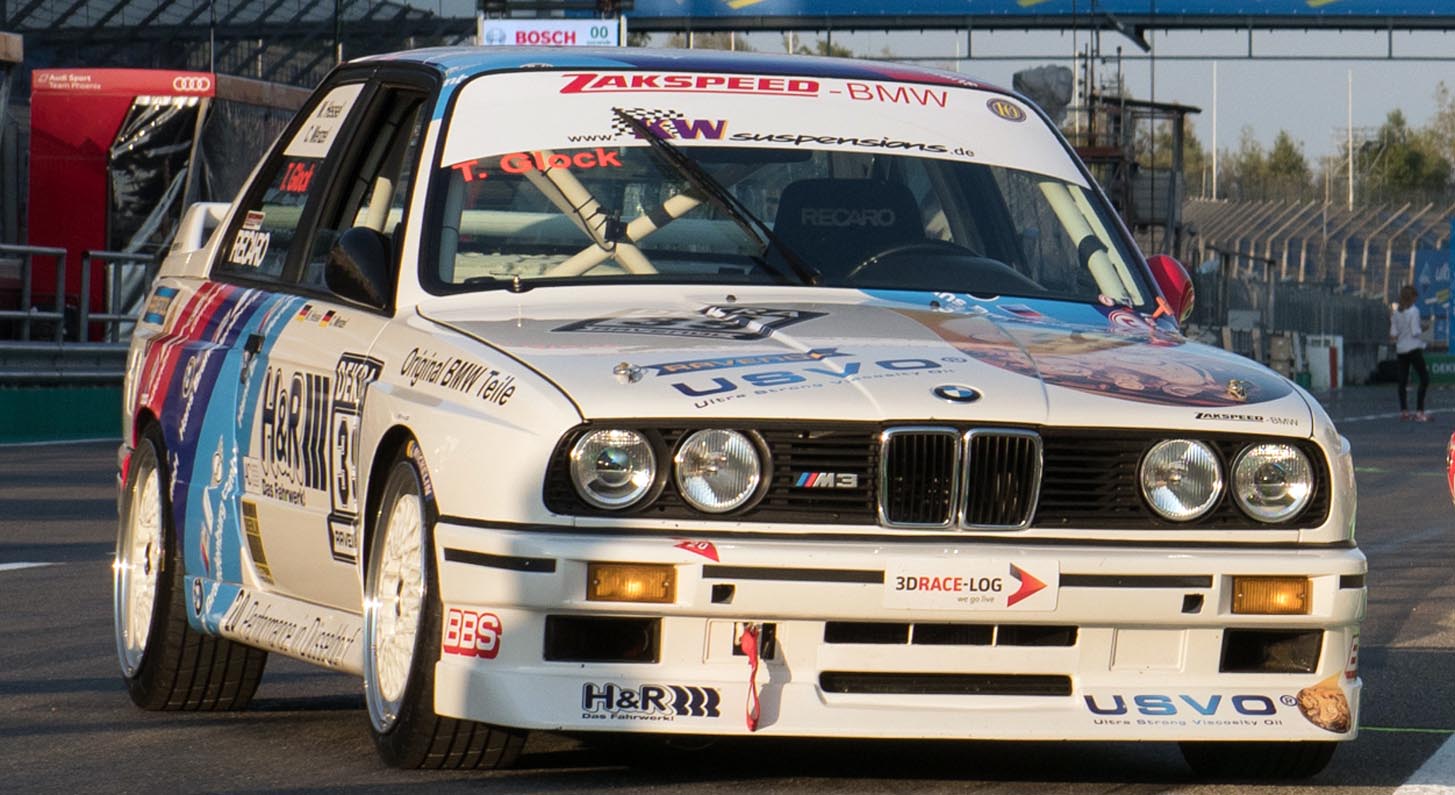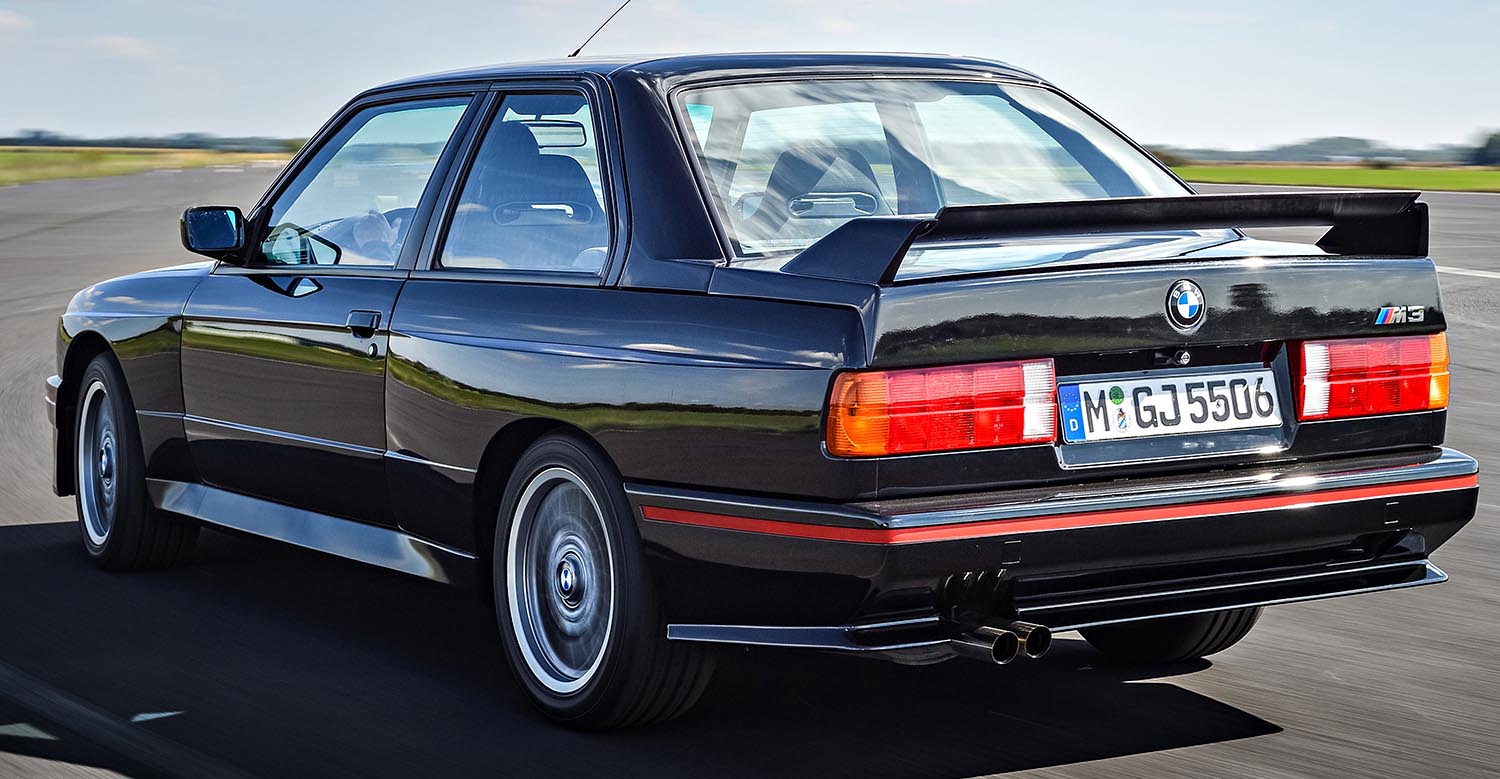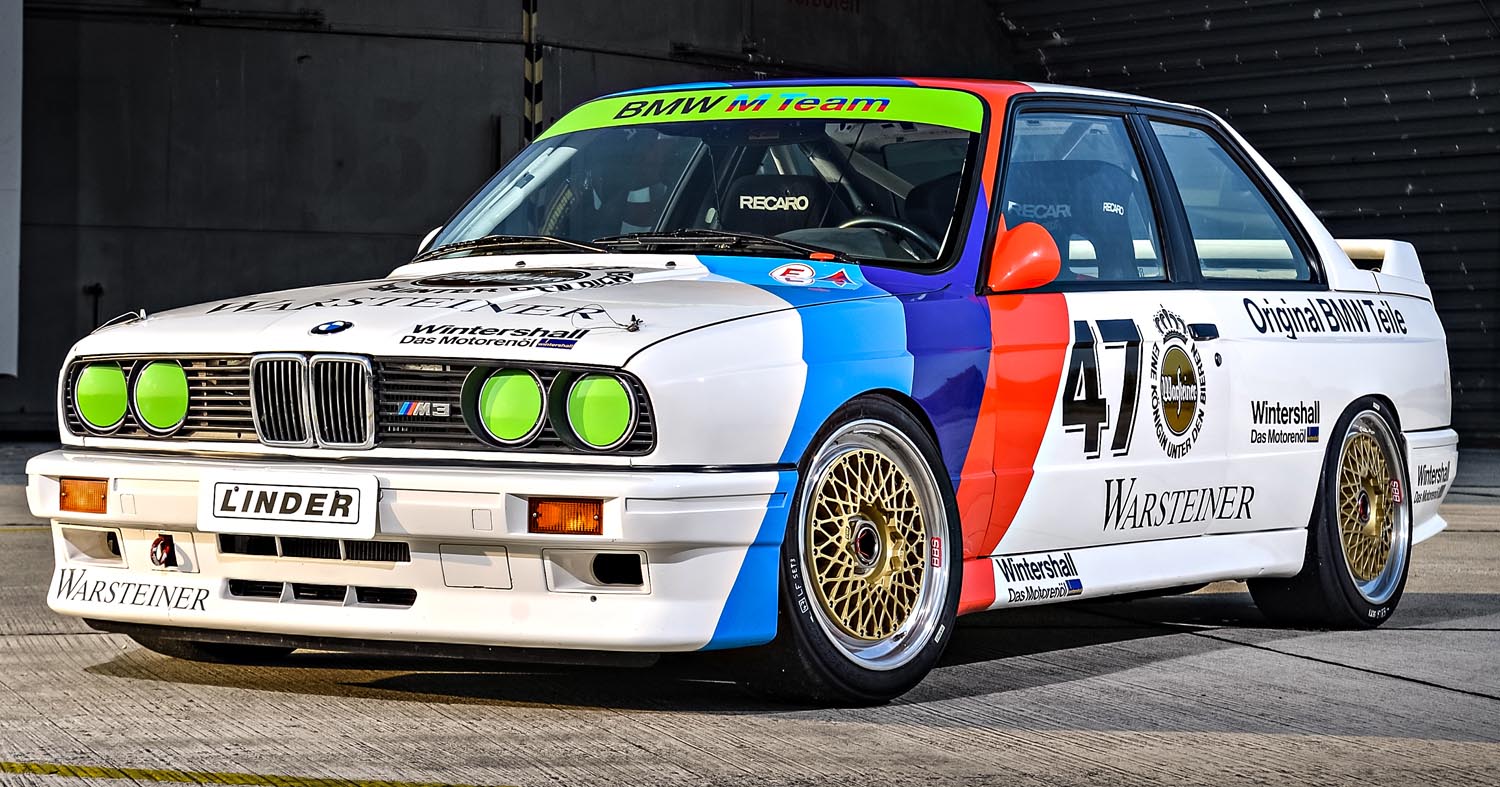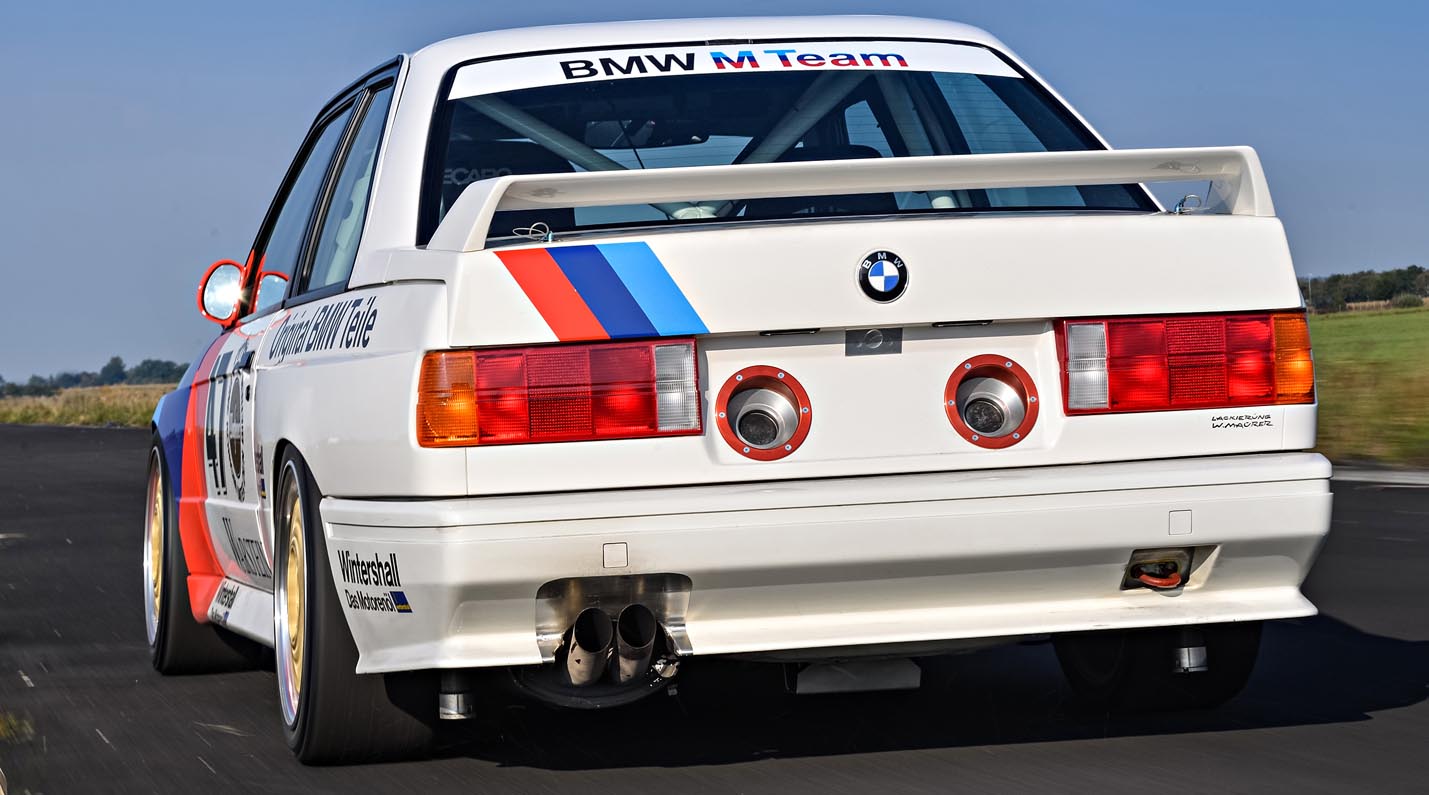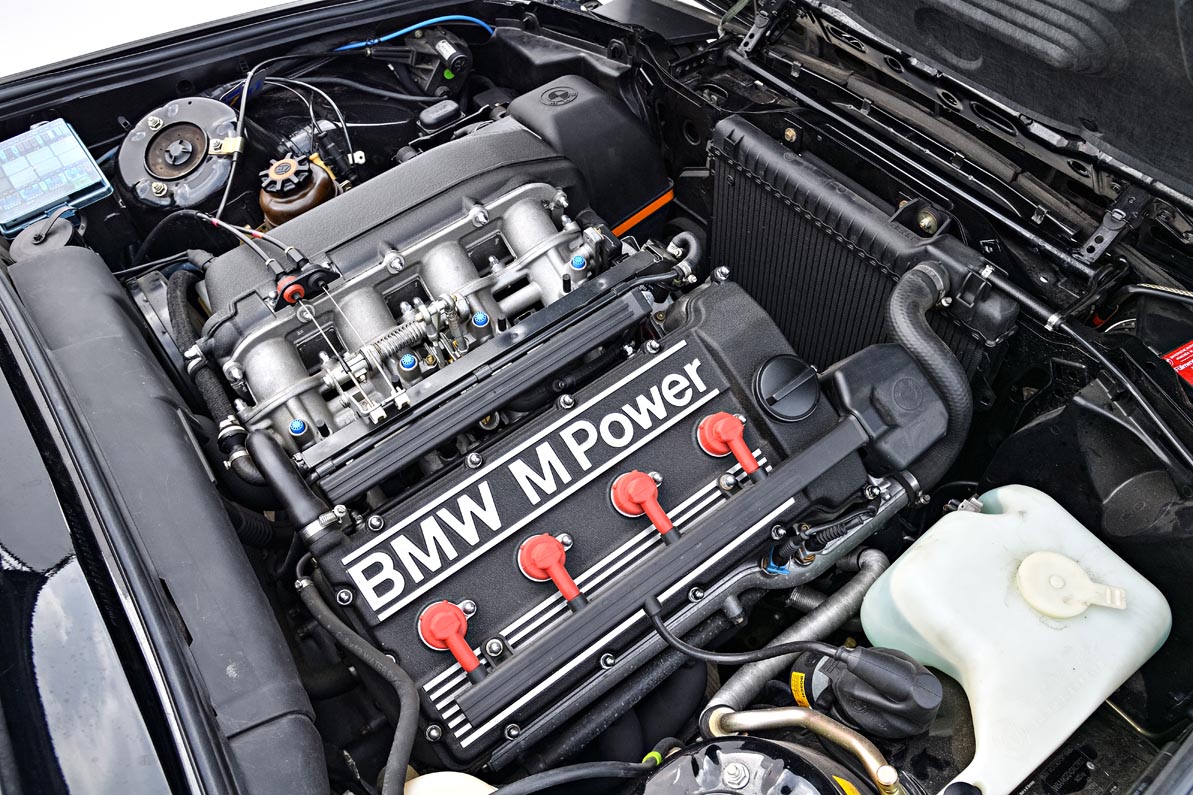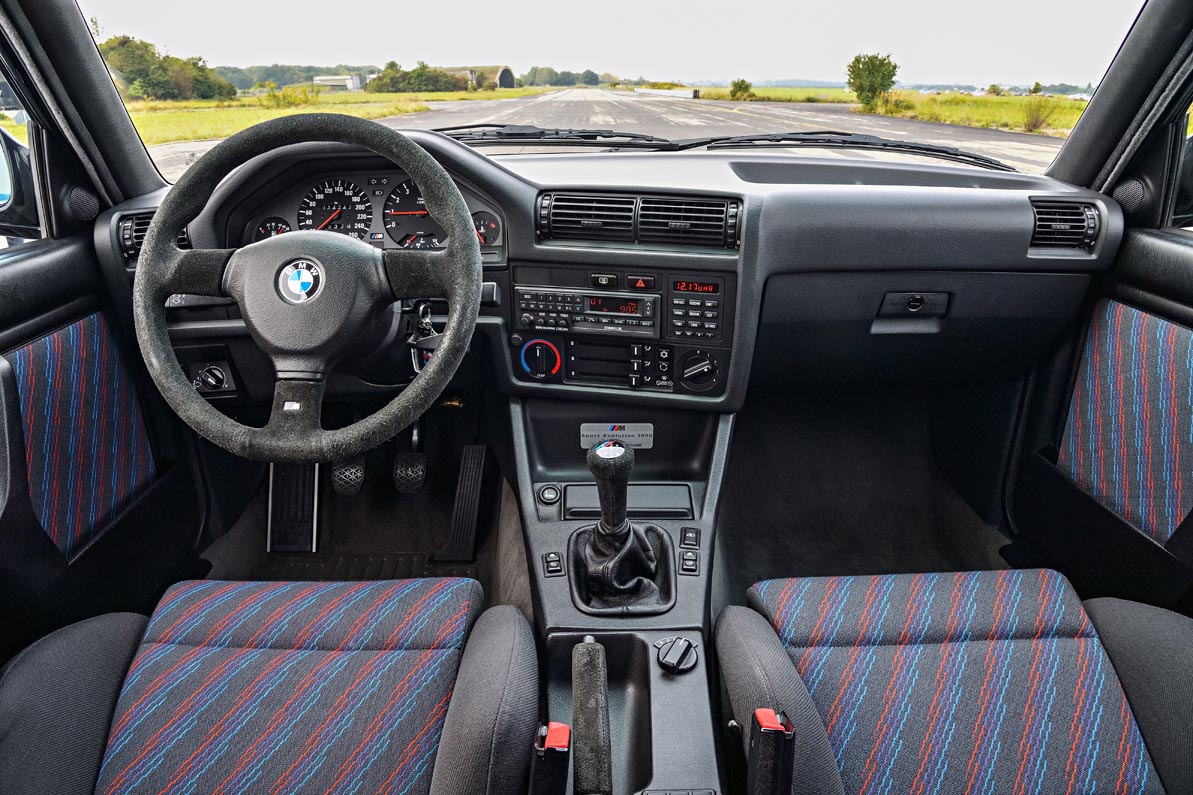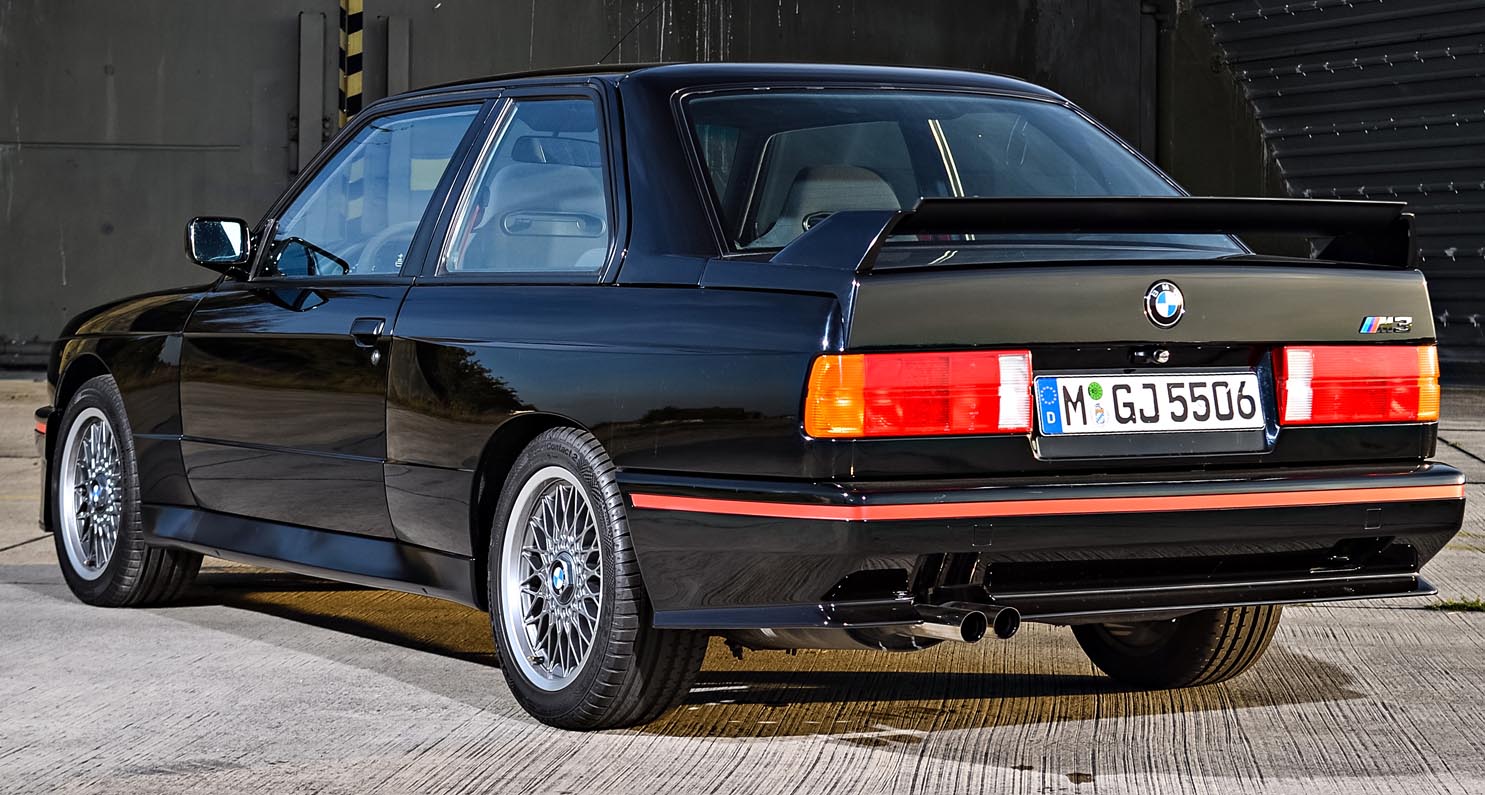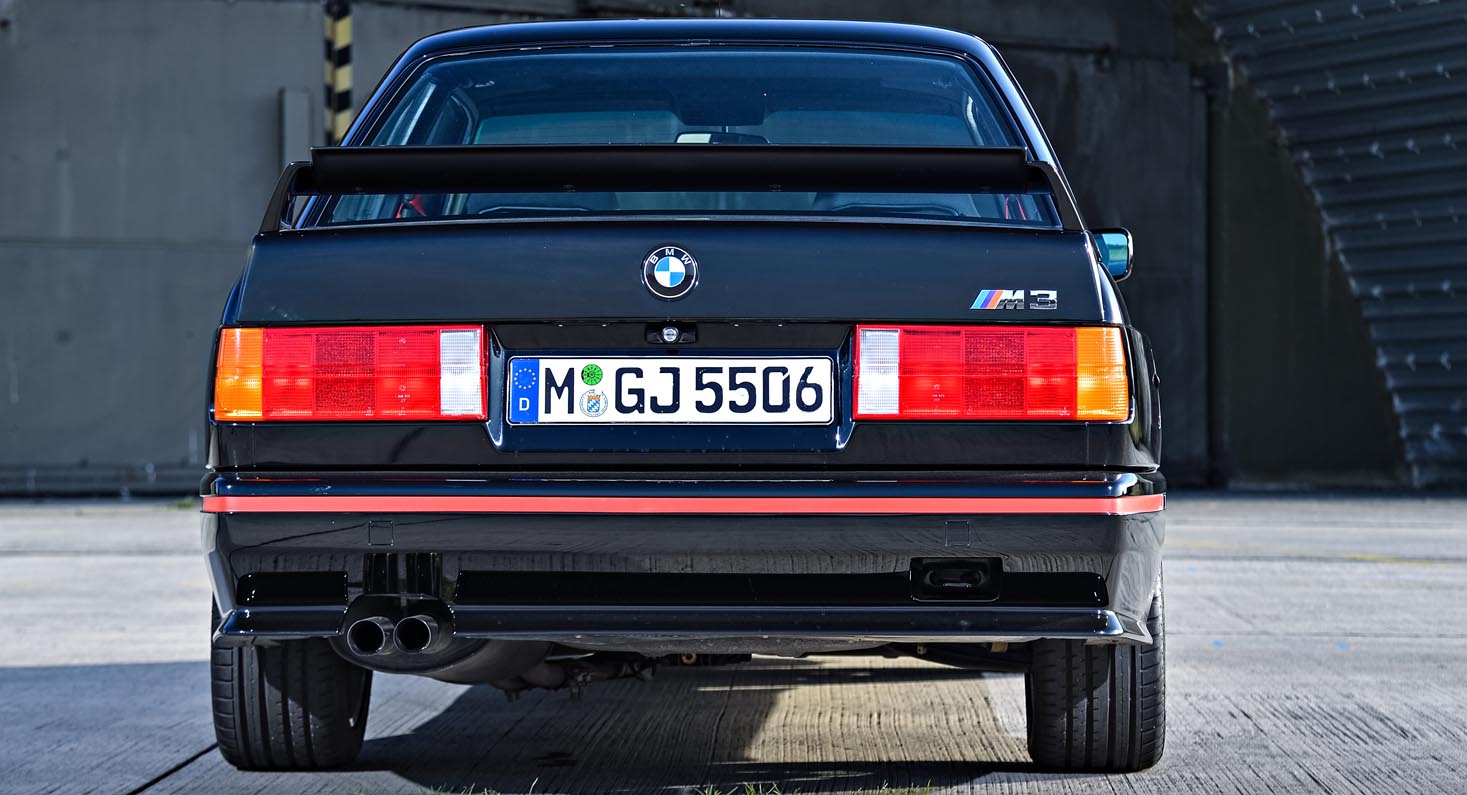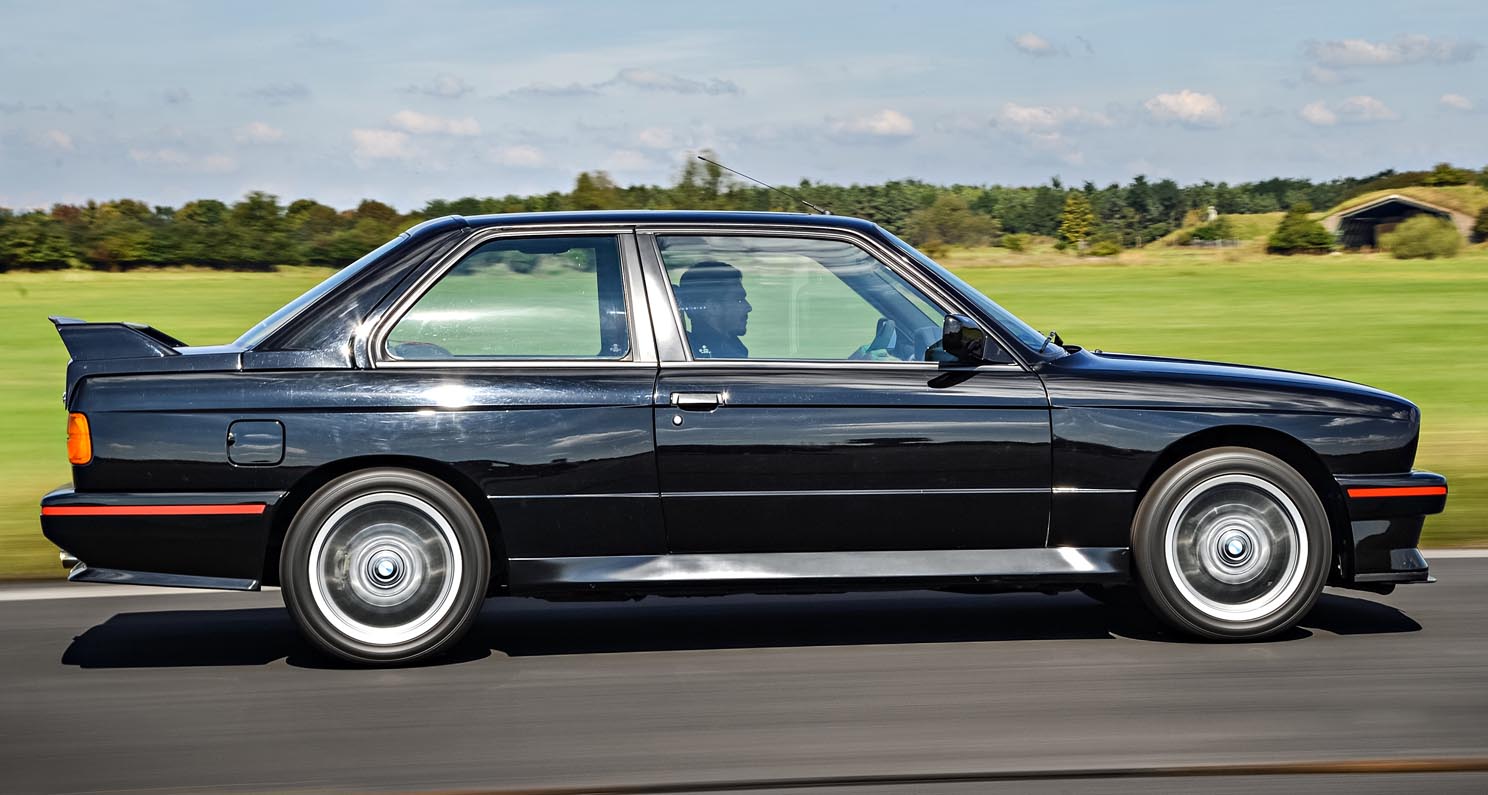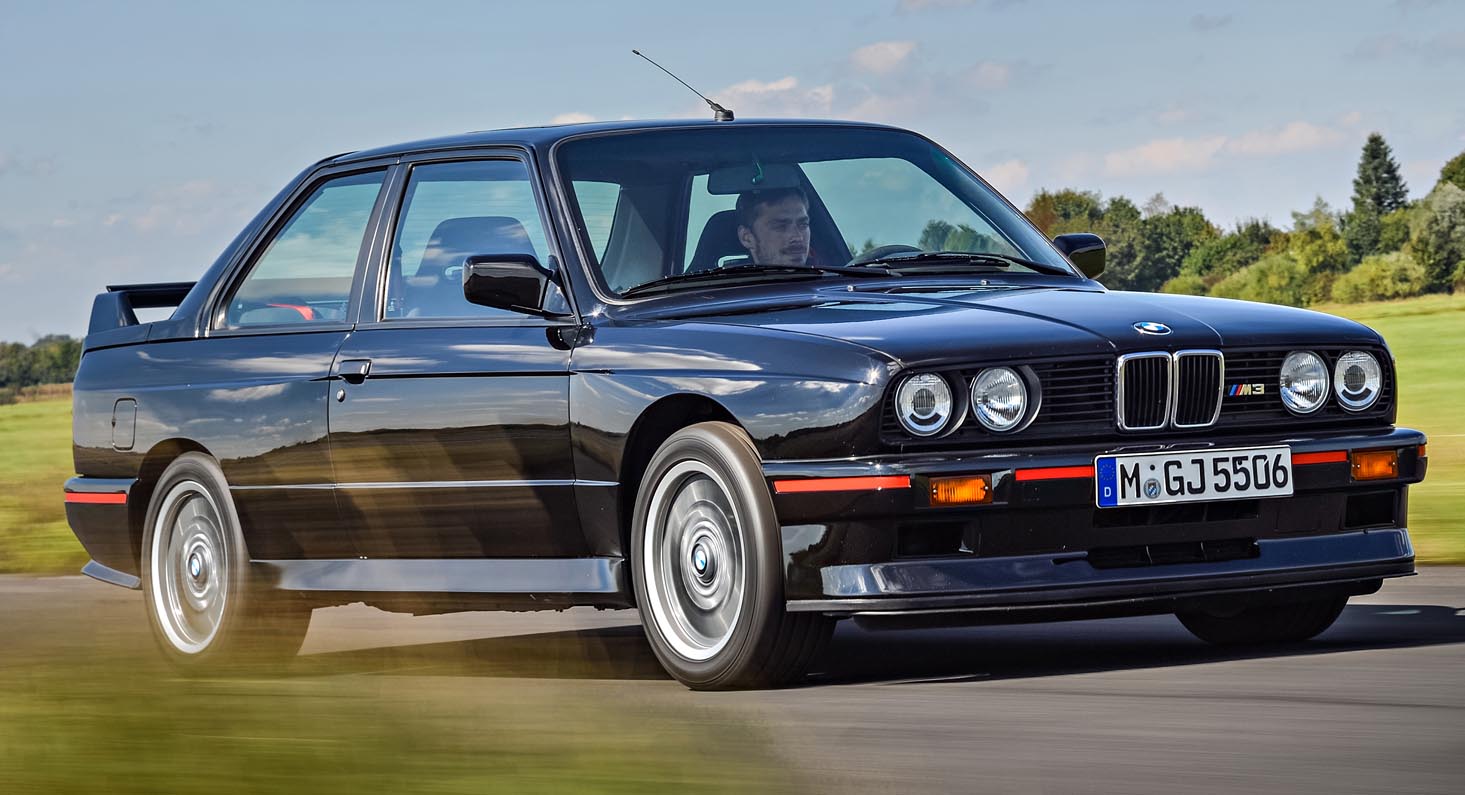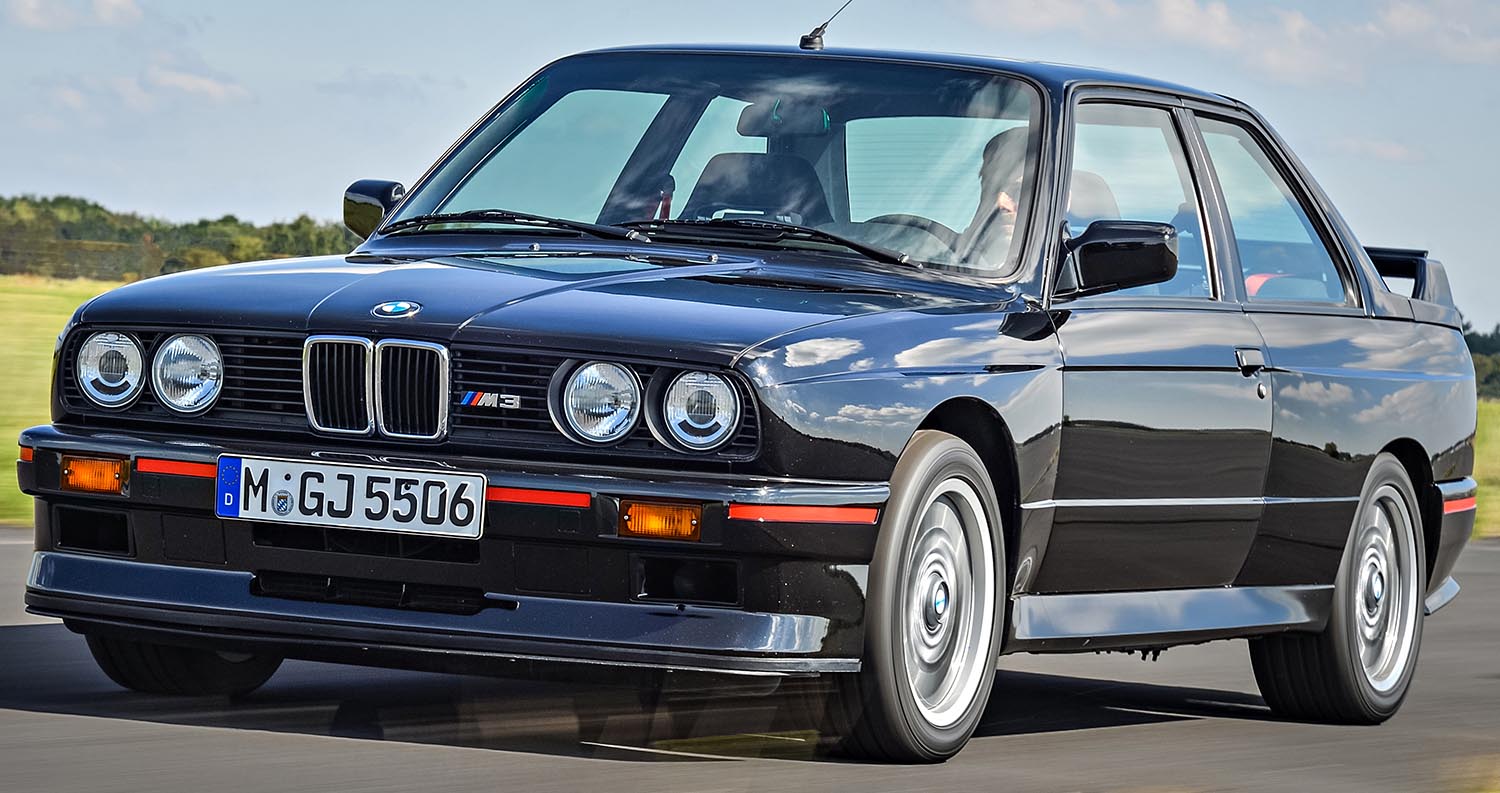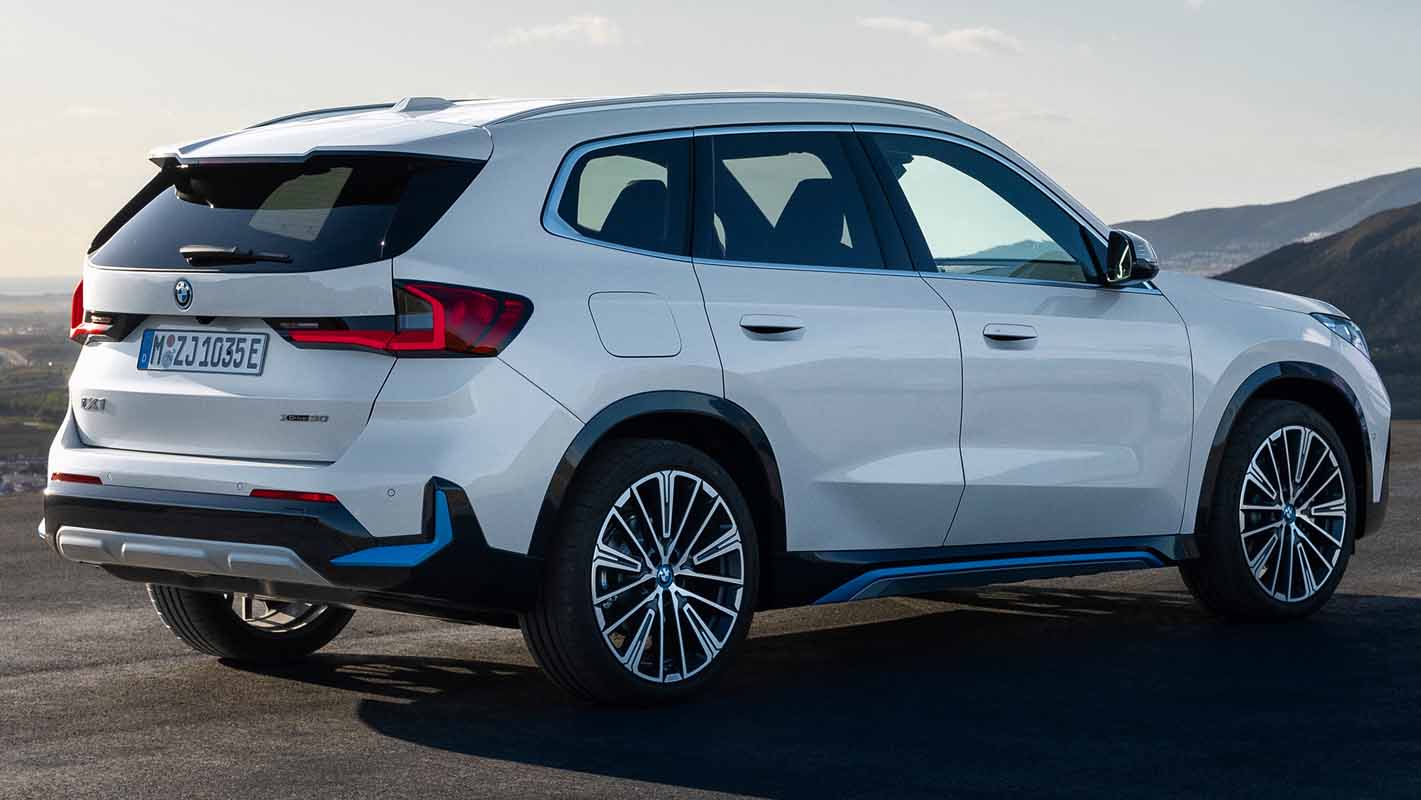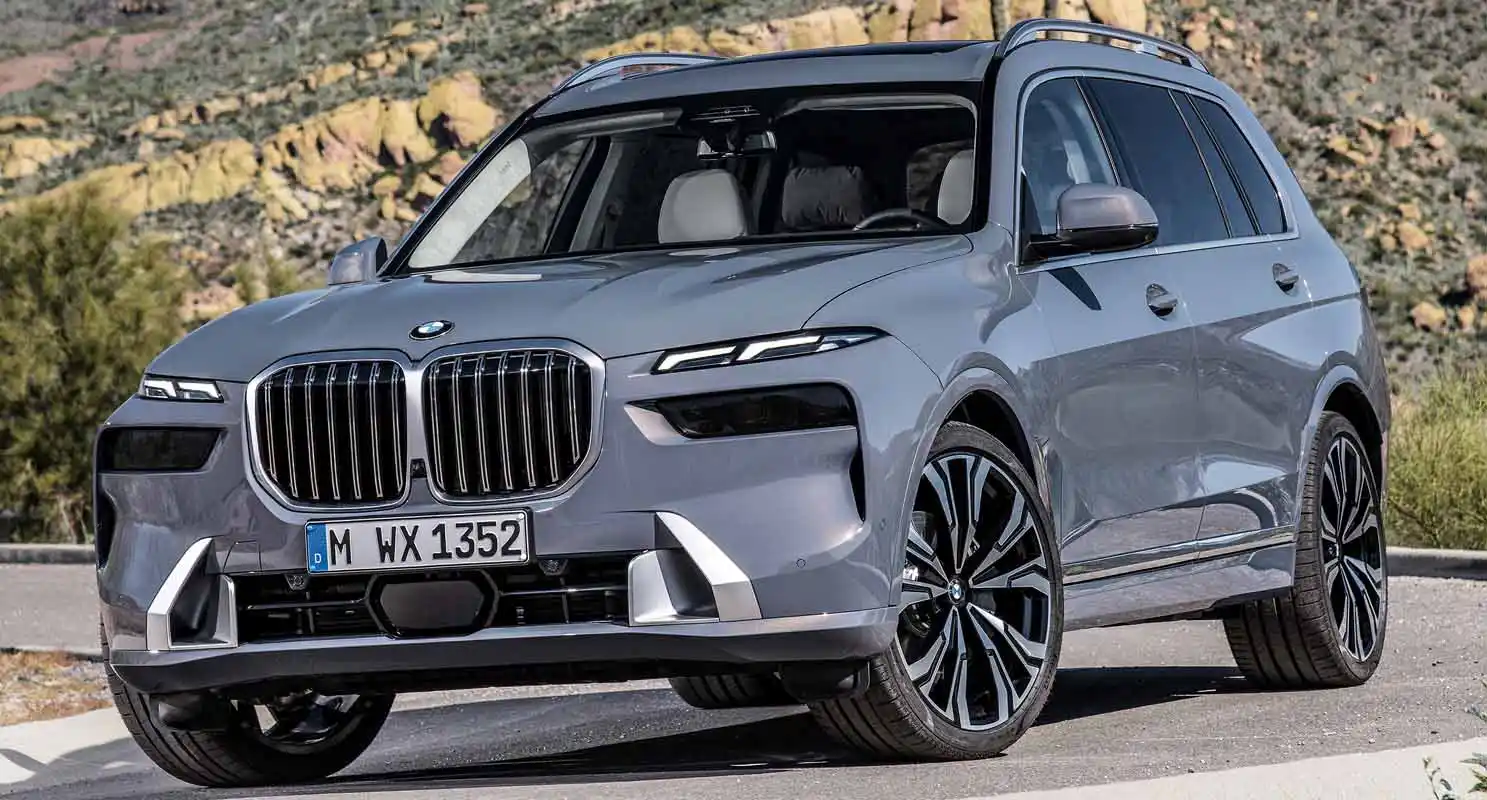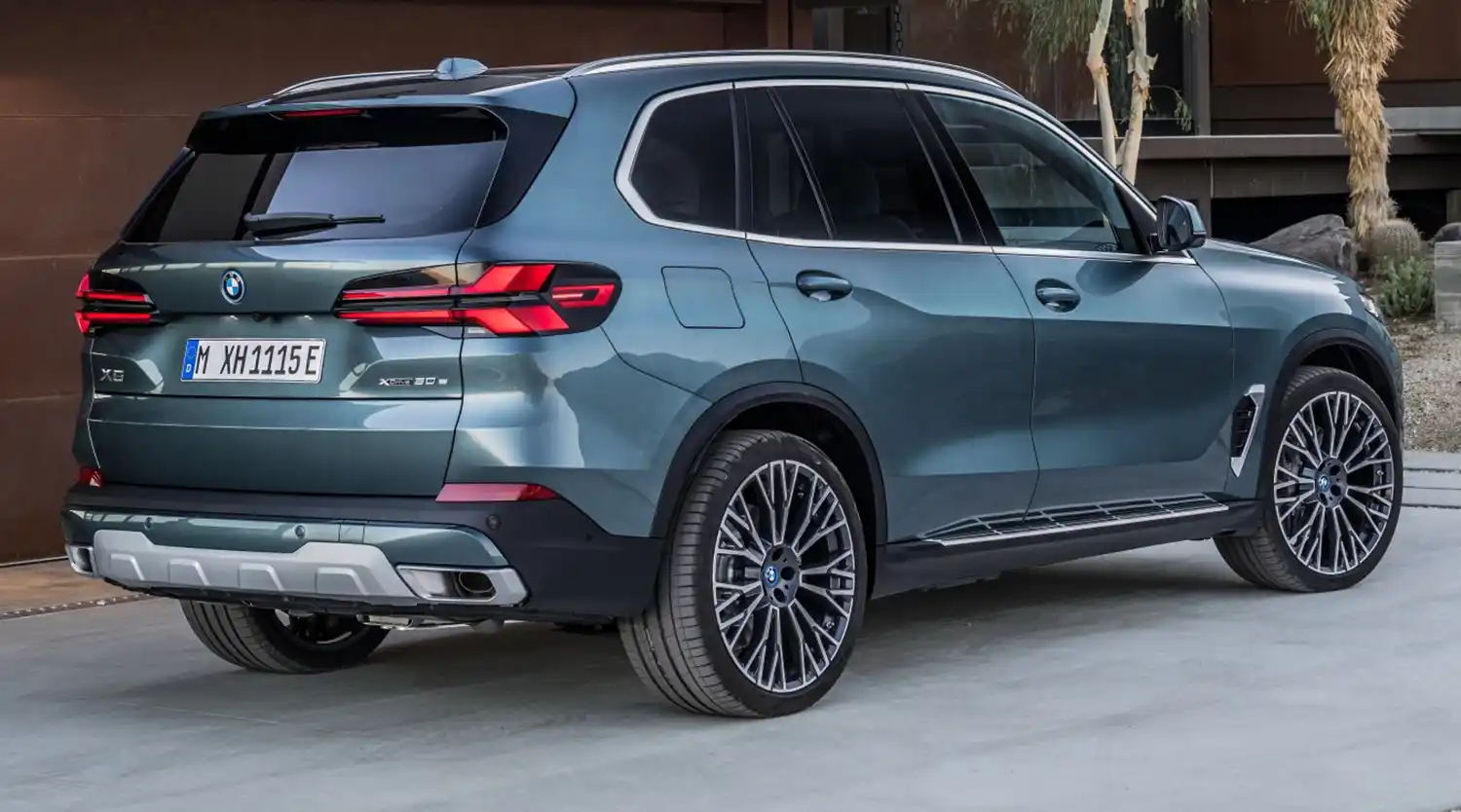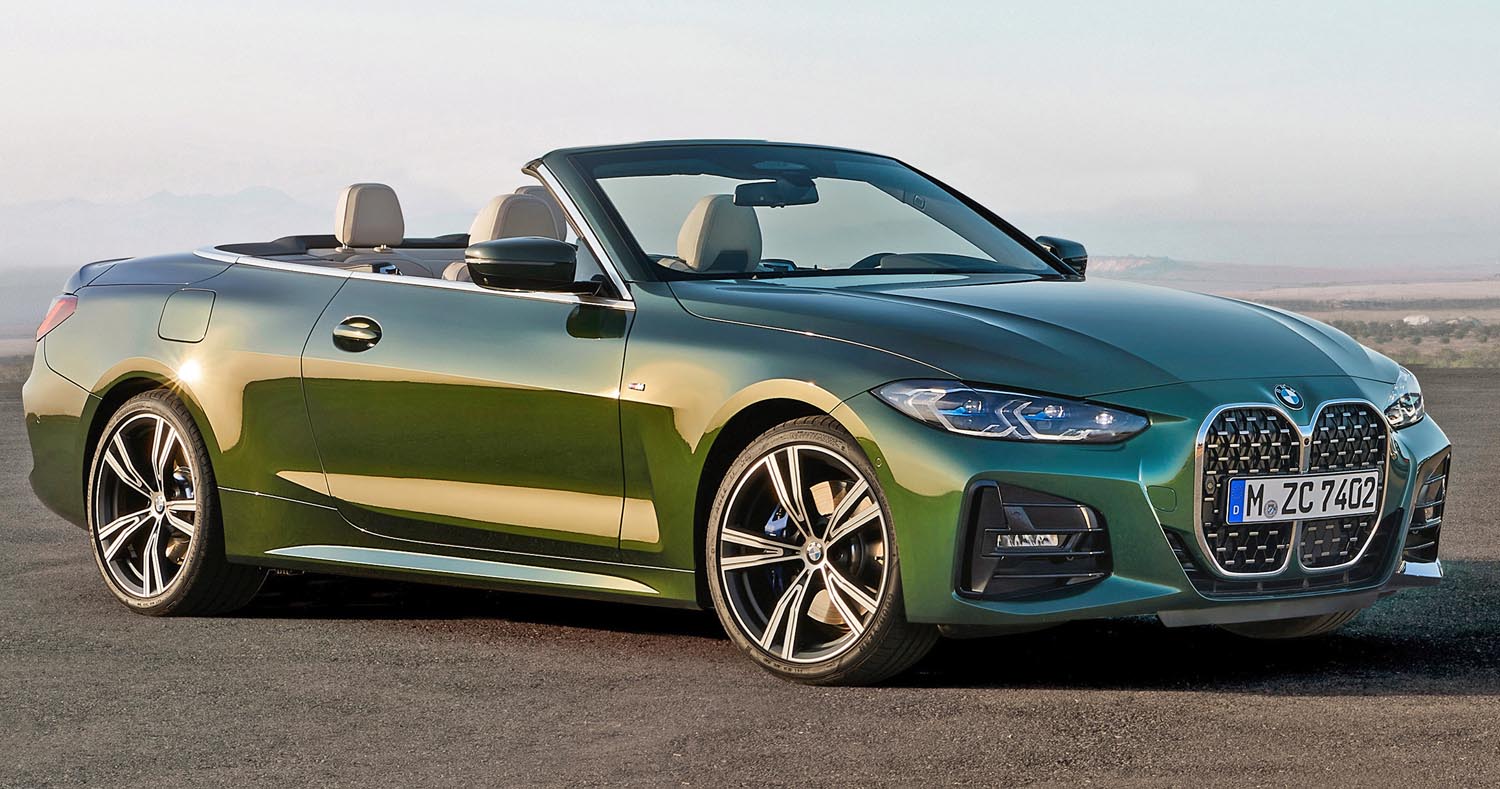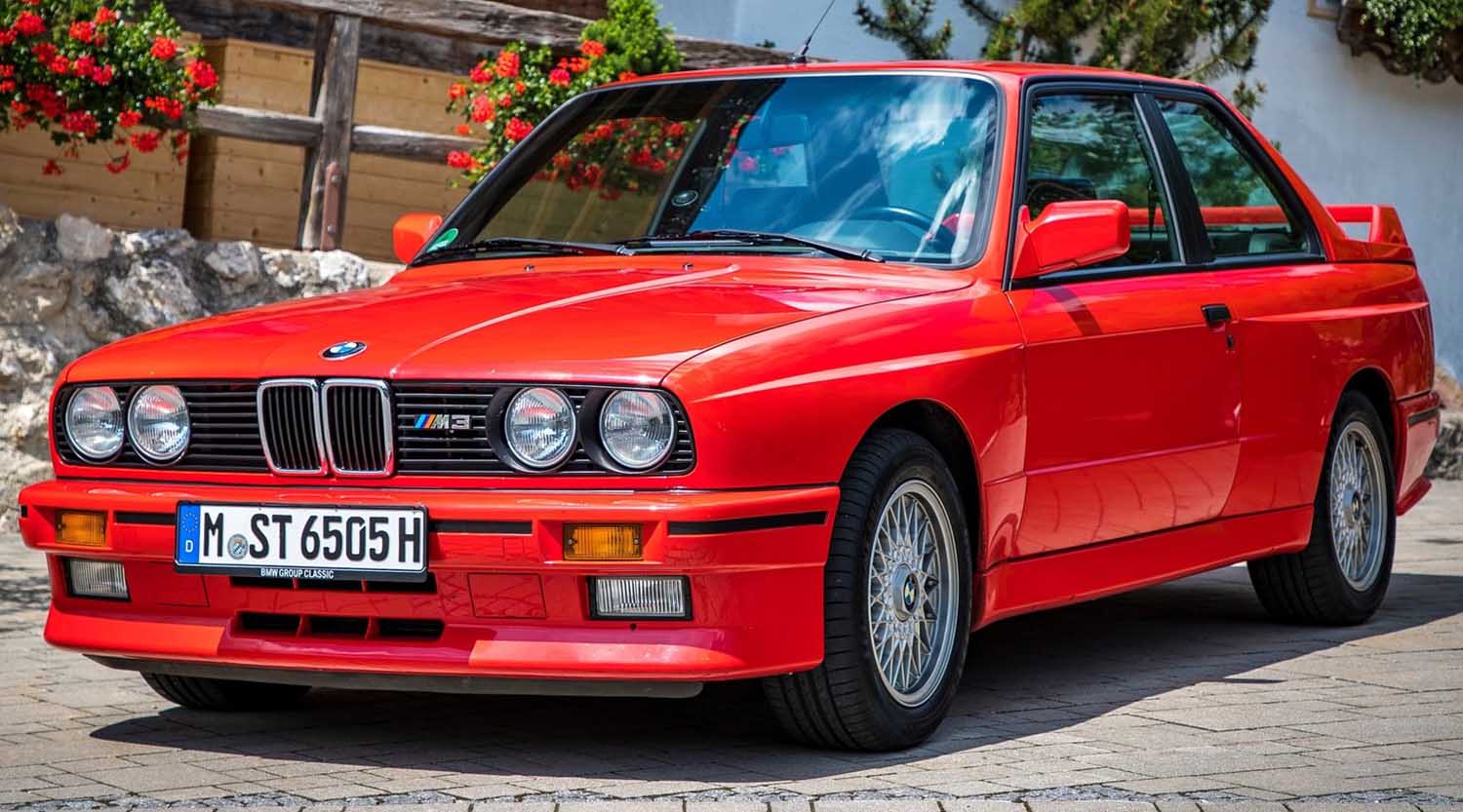
The anticipation began in August 1985. That summer Germany’s automobile magazines built up their readers’ expectations for the fastest 3 Series BMW of all times. The key data revealed a sports car that would punch way above its class: 200 hp, top speed in excess of 230 km/h, sprint from a standing start to 100 km/h inside 6.7 seconds. However, the story was that “the most dynamic BMW 3 Series drivers” would have to wait until mid-1986. The pundits were right on that count. But one prediction missed the mark by a mile: anyone who “wants to be in the A Team needs to be turbocharged under the bonnet”. Not true. The BMW M3 (E30) became the most successful touring car in motor-sport history.’ The M3 project was launched just a few months earlier. Production of the M1 mid-engine sports car had already been discontinued for some time and BMW CEO Eberhard Kuenheim commissioned a design for a successor, almost as an aside, according to legend. After one of his regular visits to Motorsport GmbH in Munich’s Preußenstraße he said, almost as he was leaving: “Mr. Rosche, we need a sporty engine for the 3 Series.” His aspiration was in good hands. Motorsport GmbH with its managing director of technical development Paul Rosche had demonstrated its expertise with the legendary 5 Series saloons driven by M engines as well as developing the Formula 1 turbo engine that powered Brazilian Nelson Piquet to win the World Championship in the Brabham BMW in 1983.
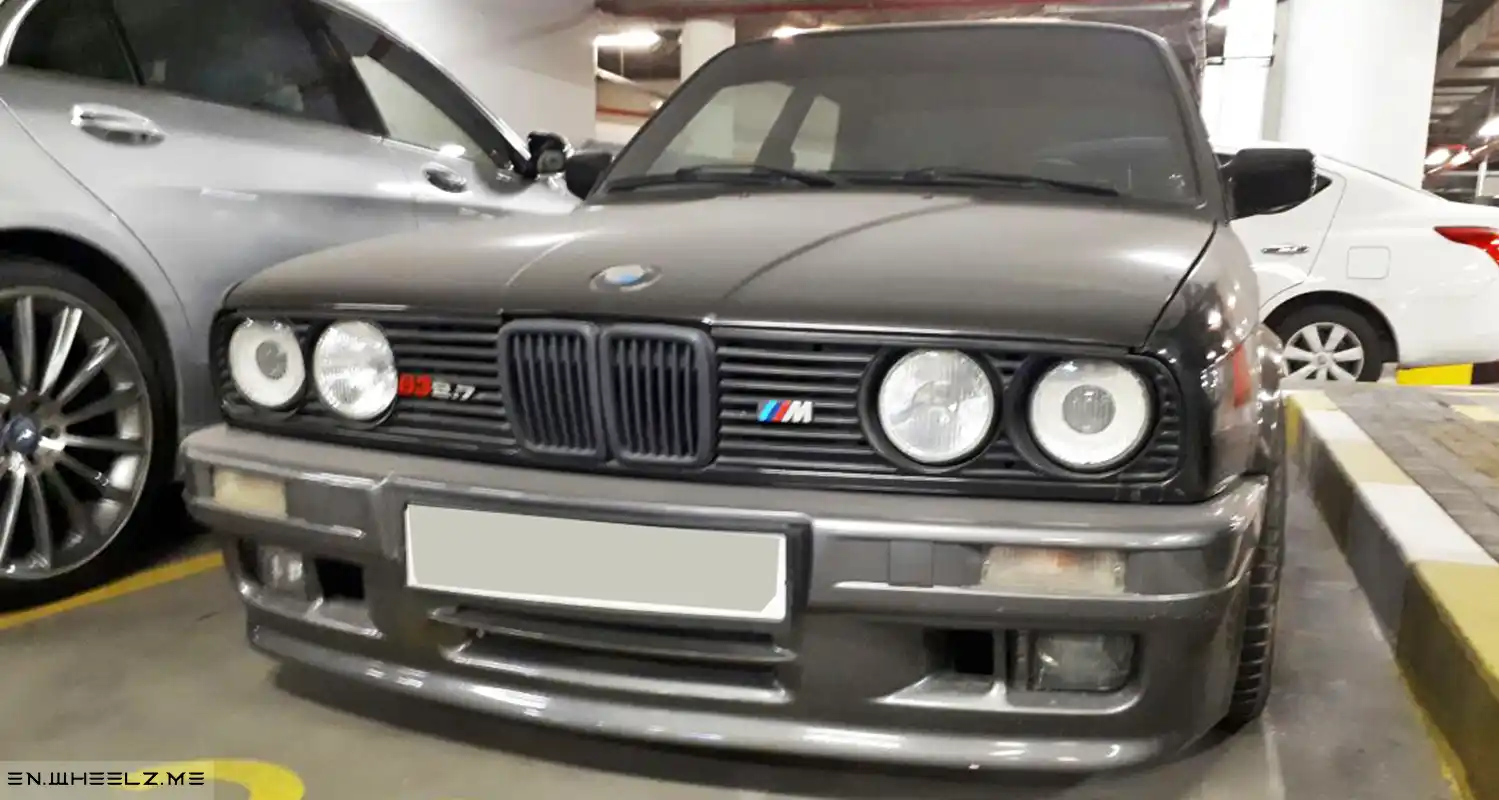
Power source: a four-cylinder engine with 2.3 litres displacement and four-valve engineering
The new 3 Series engine had something in common with this: the crankcase. It originated from volume production and actually formed the basis for the two-litre engine with four cylinders. Four cylinders meant less weight and high torque, an ideal platform for a sports engine in the projected displacement class. Naturally enough, the series four-cylinder engine was much too tame for a sports engine. A comprehensive power boost was called for in order to turn the plucky daily workhorse into an athletic and sporty power unit. The BMW design engineers increased the displacement to 2.3 litres and applied a formulation that had already achieved significant successes over a period of many years: four-valve engineering. There was also another reason for the decision to opt for a four-cylinder engine and not adopt the six-cylinder engine introduced in the BMW 3 Series. The longer crankshaft in the big engine started to vibrate much earlier than the shorter four-cylinder shaft. The design engineers therefore designed the crankshaft drive of the BMW M3 with sufficient torsional stability to achieve 10,000 revolutions a minute and more. By comparison with the four-cylinder engine installed in the series vehicles, this represented an increase of more than 60 percent. The rated speed for the road version of the BMW M3 was still significantly below the critical range at 6,750/min and therefore offered sufficient scope for further developments.
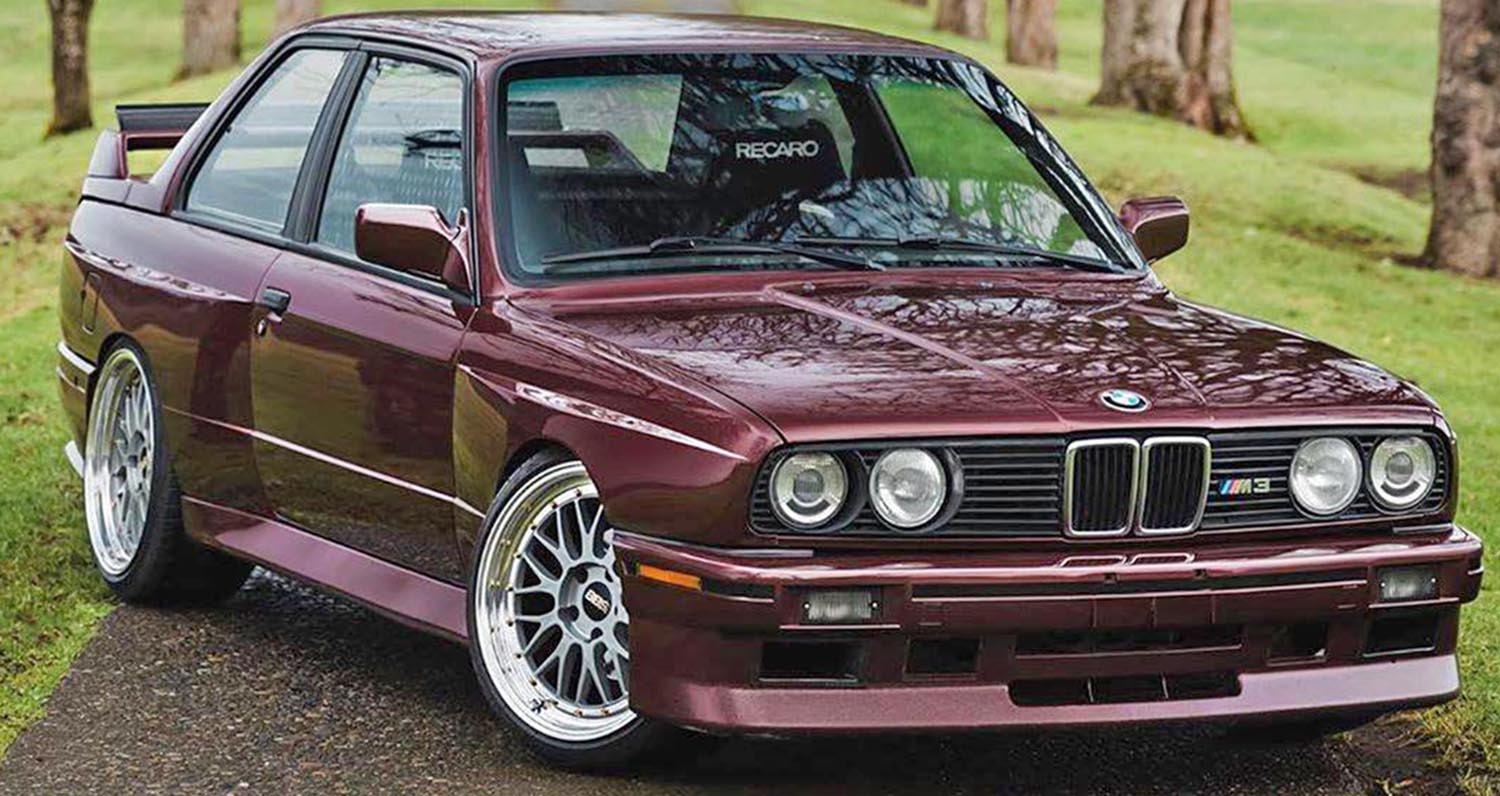
Paul Rosche recalls: “We started work immediately. One advantage was that the big six-cylinder engine originally had the same cylinder gap as the four-cylinder engine. We therefore cut two combustion chambers off the four-cylinder head of the M88 and bolted a panel over the hole on the rear side.” This meant that the new four-cylinder engine had a second forebear. The six-cylinder engine that had initially created a sensation in the M1 and had meanwhile transformed the M635CSi into one of the fastest coupés in the world. Paul Rosche: “Whether you believe it or not – we had created an outstanding four-cylinder engine for the 3 Series within the space of two weeks. Under the development name S14, this engine was to generate headlines in sport and in volume production over the years to come. One Sunday, I drove to von Kuenheim’s flat and gave him the car for a test drive. When he came back he said: ‘Good, I like it.’ And that’s how the M3 came into being.
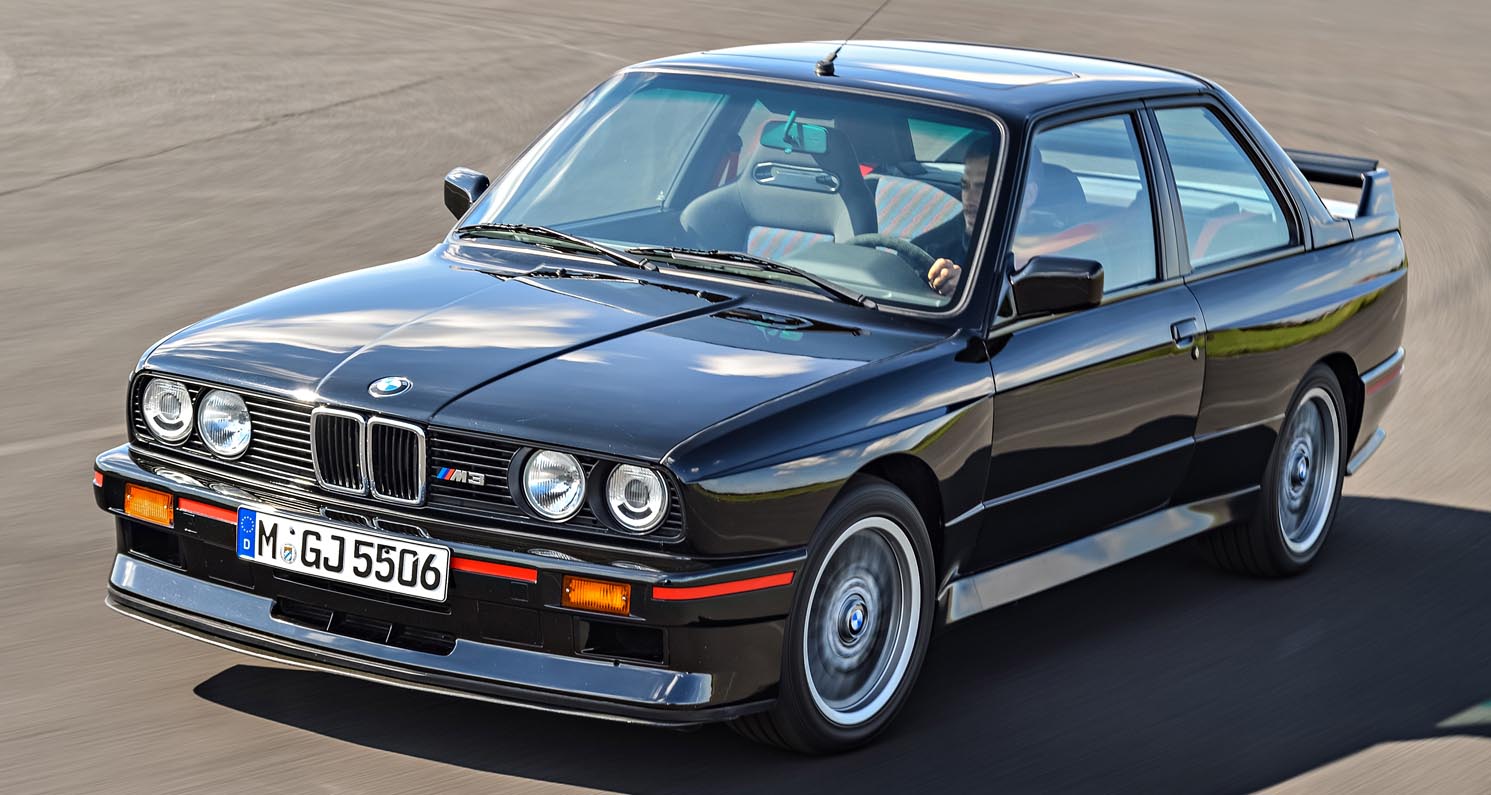
Contrary to the situation with the mid-engine sports car, the BMW M3 was not going to be crafted by hand in small batches. This car was to be produced as a mass-production automobile on an assembly line. It was destined to compete in near-production touring car motor sport, or more precisely as a Group A racing car, defined as a “production car”, of which at least 5000 units have to be built within the space of twelve consecutive months in accordance with Annex J of the international automobile sport regulations. Naturally, this meant that the M3 had to be capable of operating as an everyday road vehicle.
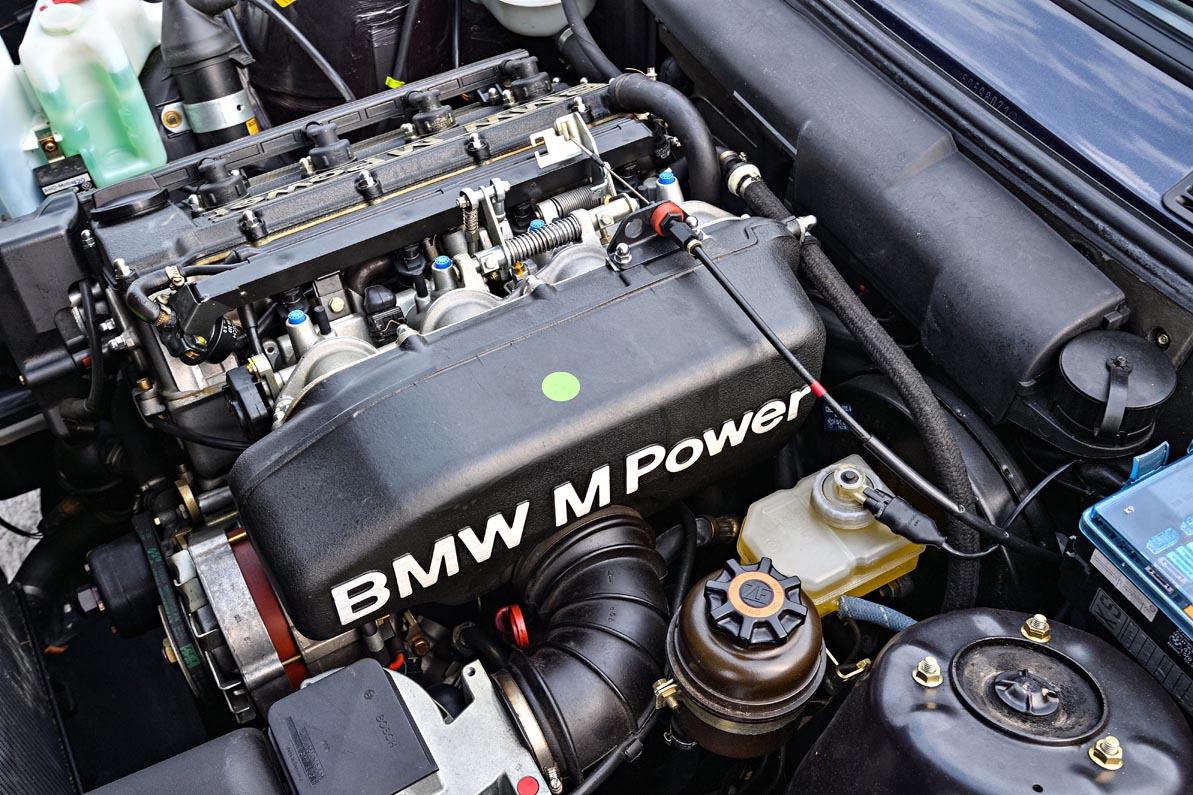
Clean exhaust: developed for operation with catalytic converter right from the start
This was not the only challenge taken on by the engine specialists in spring 1985. If the BMW M3 was destined to become a pioneering sports car, then this should be the case in as many disciplines as possible. And that also applied to emissions. The four-cylinder engine was developed right from the start so that a three-way catalytic converter could easily be fitted. This approach involved BMW in another public relations exercise because lead-free petrol didn’t exactly have the reputation of promoting the life expectancy of high-performance engines in the mid-1980s. Another factor was that bolt-on catalytic converters significantly stifled the power build-up of some cars. The BMW M3 proved that there was also another way. The development of catalytic converters was still in its infancy, but the sporty 3 series still generated an unrivalled 143 kW or 195 hp.
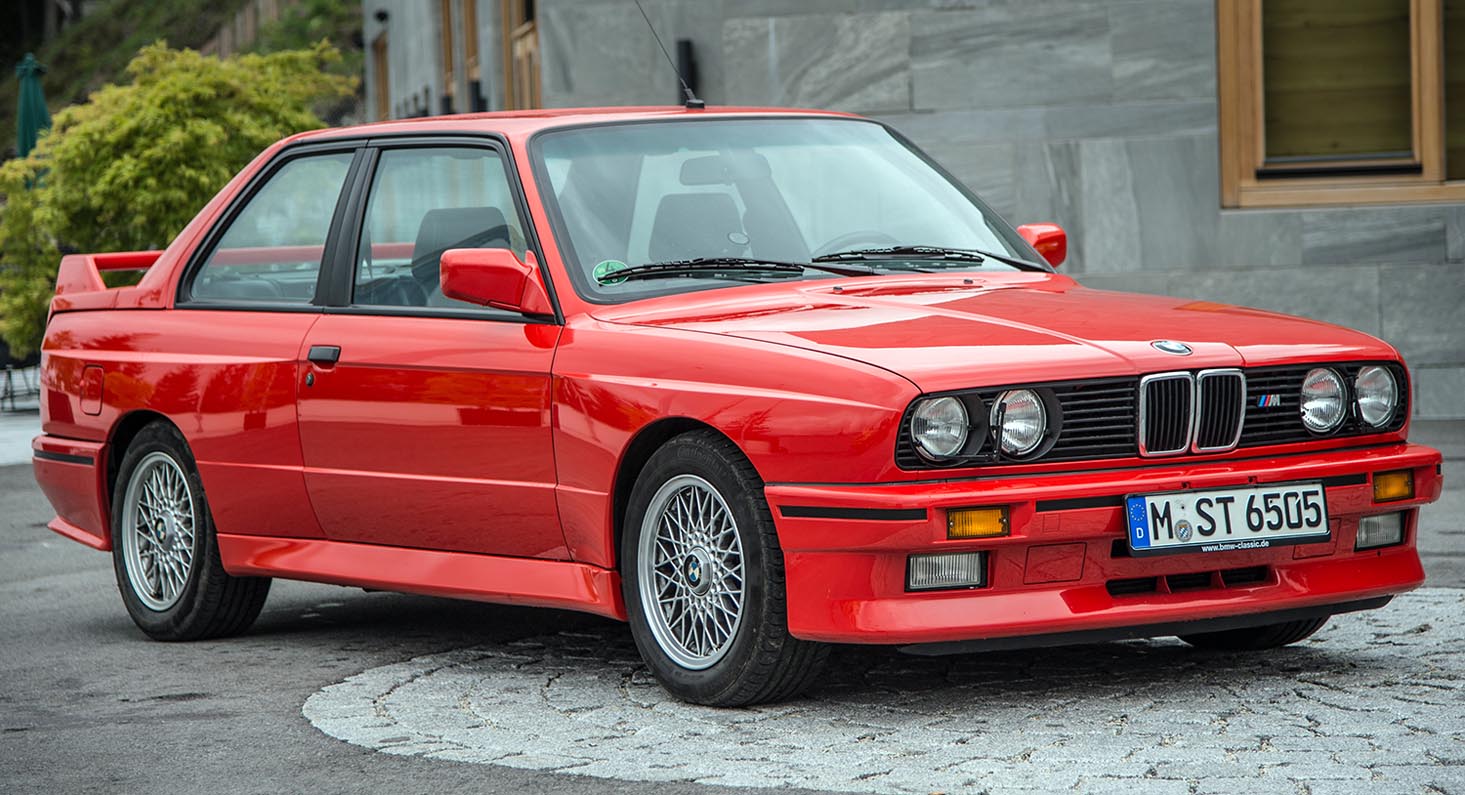
Test trial Nürburgring
There’s no joy without sorrow – the developers of the BMW M3 experienced this on the initial test drives. Although the engine performed without any incidents, the exhaust system clearly failed to digest everything that was blown into its manifold by the high-performance power unit. The pipes fractured and this gave the development department some sleepless nights. It transpired that these problems were caused by the very high temperatures of the exhaust gases when the engine was operating at full power. The test drives on the north loop of the Nürburgring were particularly hard on the materials and the high-performance exhaust system became so hot that it expanded by as much as 25 millimetres and became distorted within its mounting. This problem was solved shortly afterwards with a distinctly unspectacular solution. A simple set of different washers allowed more play. The vehicle was now ready to roll, and the test drivers from BMW Motorsport GmbH immediately proved the point with an impressive performance on the high-speed test track in Nardo, Italy. The exhaust system withstood the test just like the rest of the car.
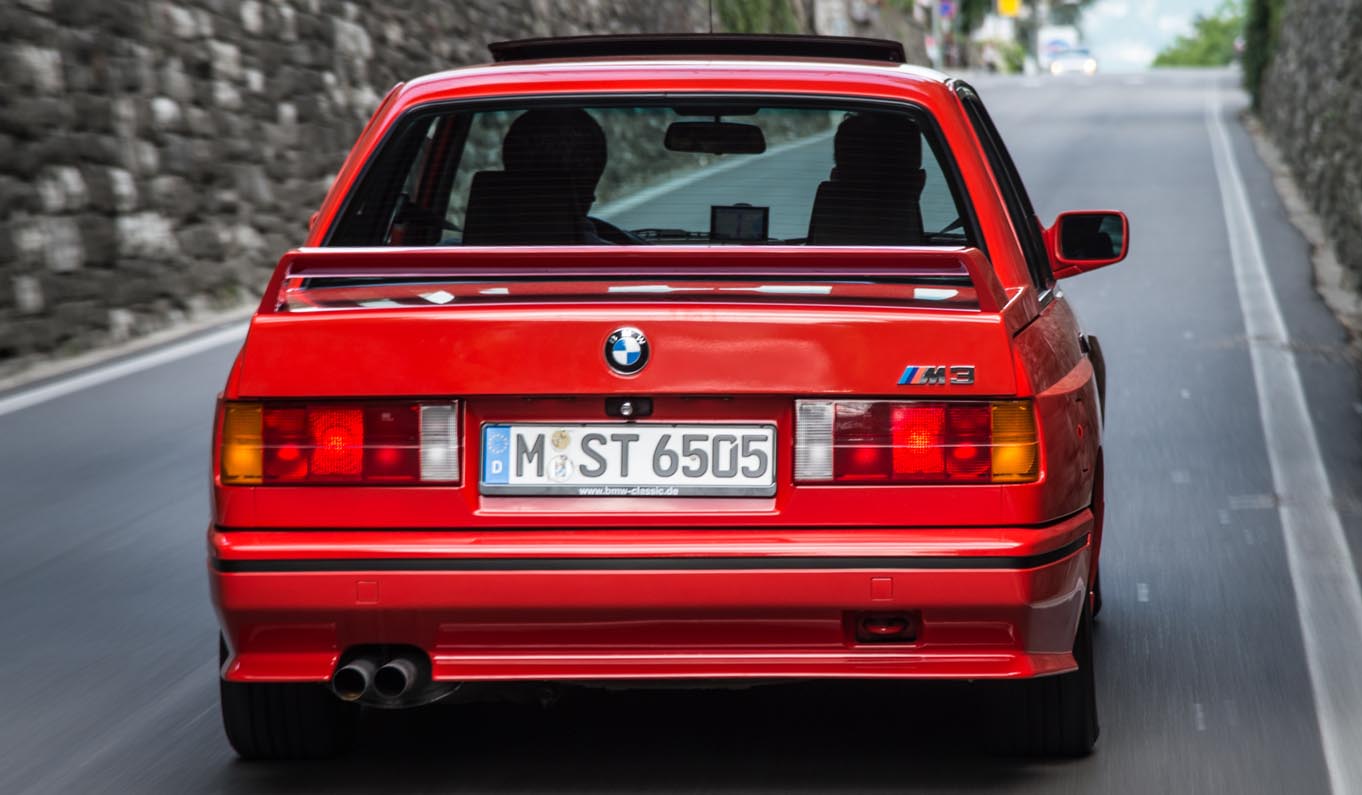
World premiere at the Frankfurt Motor Show in 1985
On the BMW exhibition stand at the Frankfurt Motor Show in autumn 1985, the M3 was presented to a more broadly based public audience for the first time. Even without a special paint finish, it was not difficult to distinguish the car from the other BMW 3 Series vehicles. The boot lid was crowned by a spoiler across the width of the car. Aprons all round indicated the refined aerodynamic work that had been carried out on the body. The C-pillar of the BMW M3 was slightly wider than that of the series model and had a flatter taper in order not to interrupt the airflow over the edge of the roof and at the same time direct it more effectively onto the rear spoiler. Thick cheeks had sprouted over the wide wheels of the M3, with the flared wheel arches coming to an end in a striking lip below the edges of the wings. There was no question about it – the BMW M3 looked fast even when it was perched on an exhibition stand.
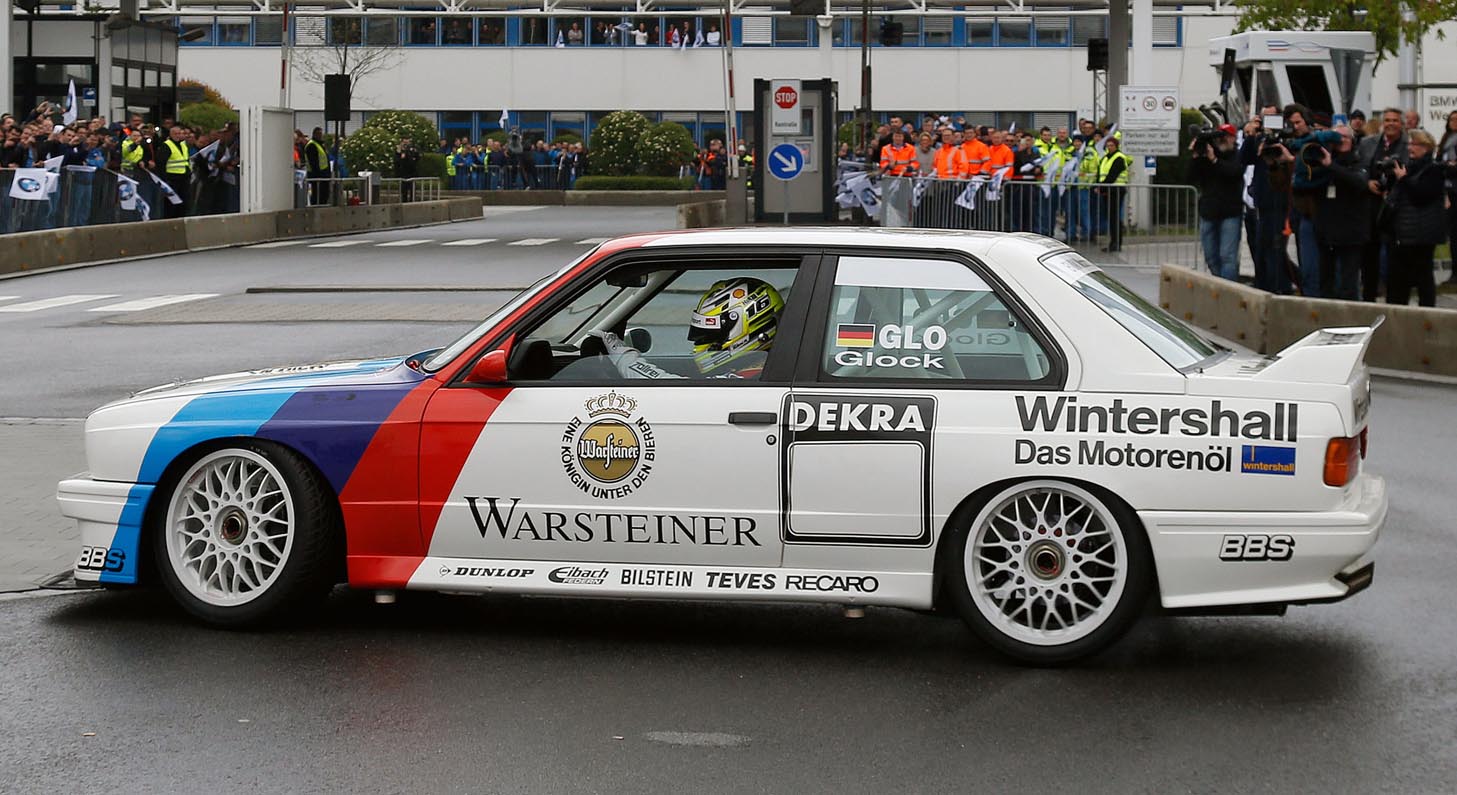
However, test drivers and customers alike had to be patient for at least another six months. In spring 1986, the first pilot-production cars were ready and the M3 was launched to a press audience – appropriately on the racing track at Mugello. The test drivers established that the aerodynamic profile of the M3 was an understatement rather than an overstatement – impressive high-quality racing technology was housed under the beefy bodywork. Axle kinematics, suspension and damping had changed. The braking system with ABS as standard comprised inner-vented brake discs with ventilation at the front and a high-pressure pump operated by the engine. This servo pump delivered power to the steering at the same time so that both systems were able to operate independently of the negative pressure of the engine.
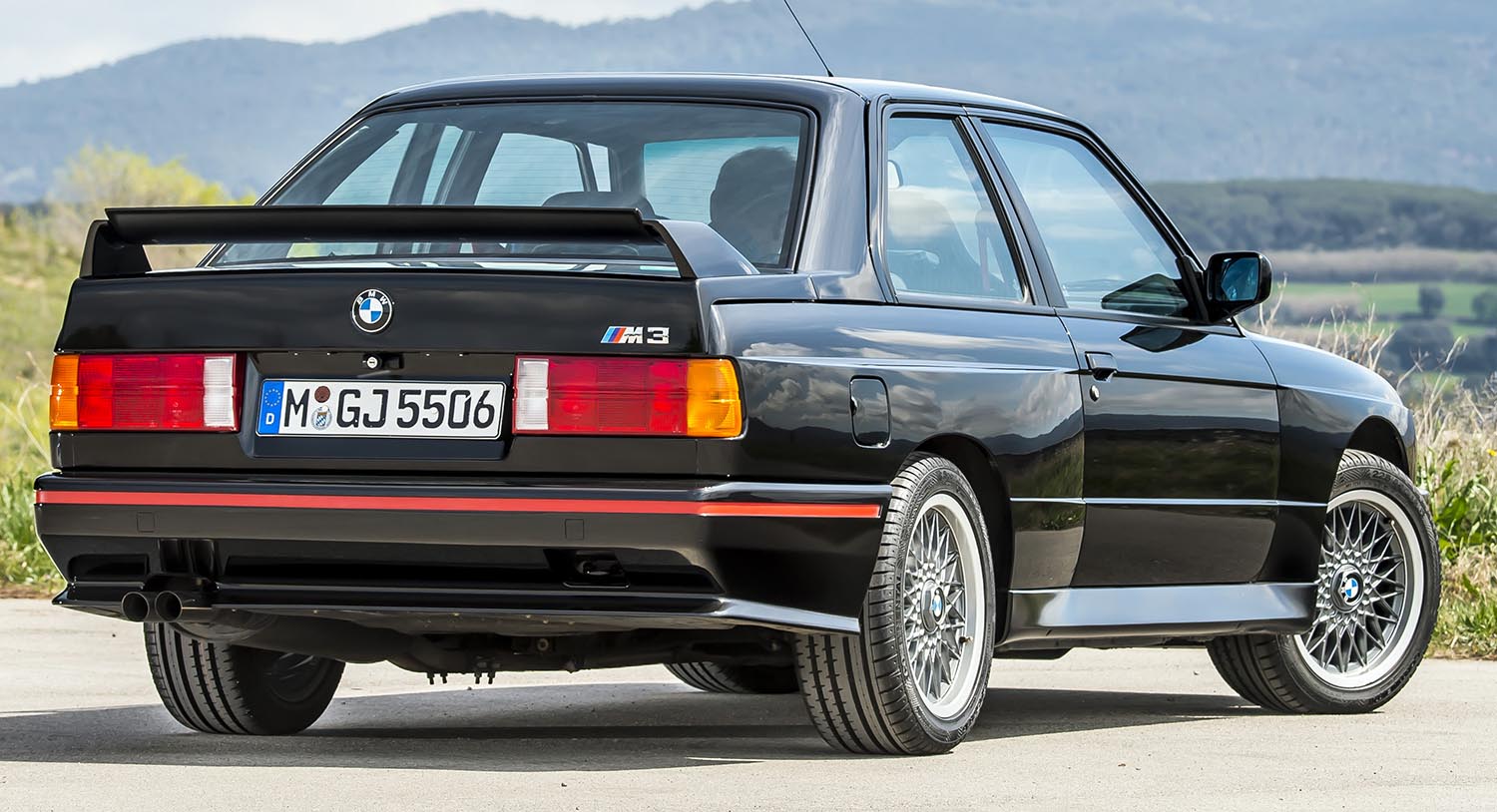
The BMW M3 weighed in at just 1200 kilograms without payload on the scales and hence remained a sporty lightweight. The weight-to-power ratio at only 6.15 kilograms for every 1 hp was an extremely impressive figure even by today’s standards. This was primarily due to the use of plastic components. Although the bodywork including the wide wheel housings were made of metal in keeping with tradition, the front and rear bumpers, and side sills, boot lid and spoilers were made of plastic. 235 km/h top speed for 58,000 marks.
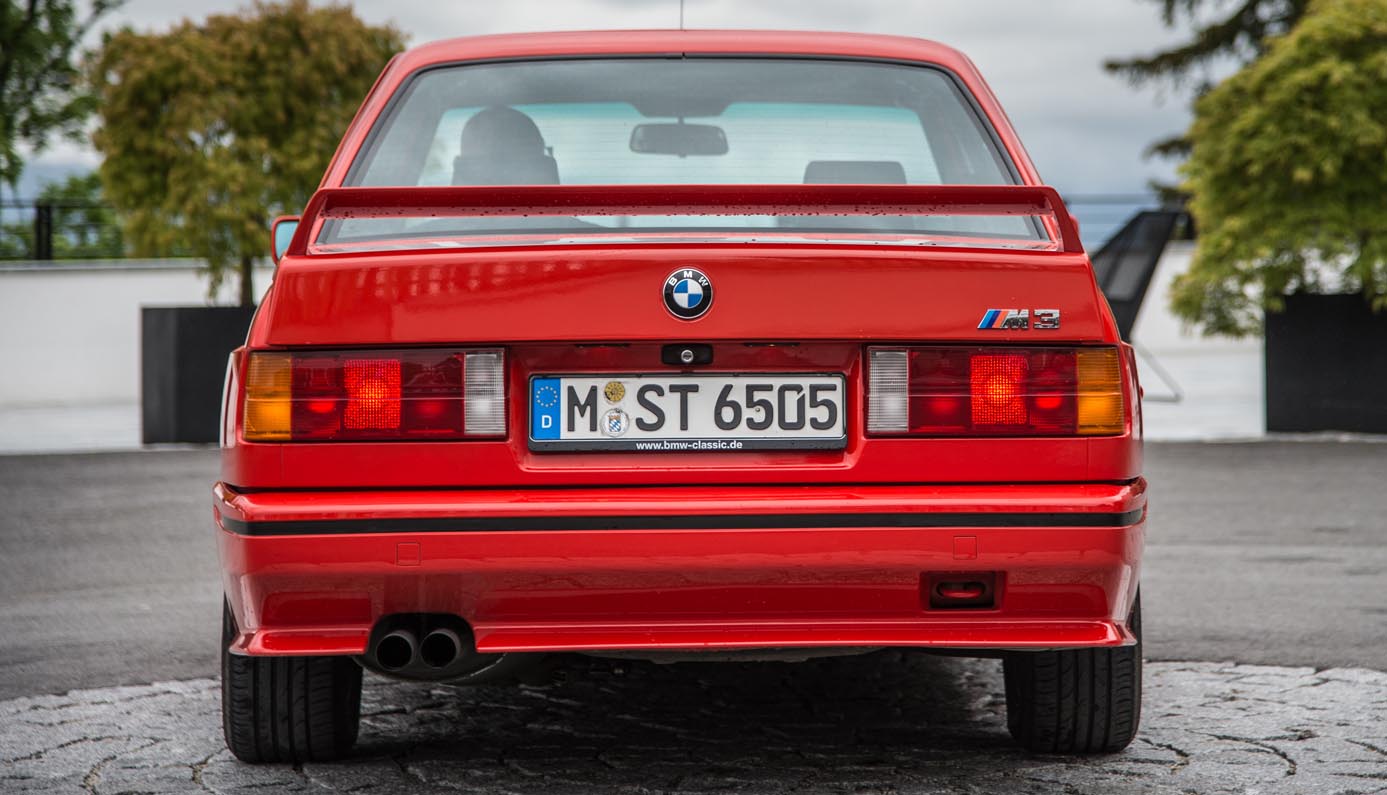
The refined aerodynamic work paid off with an outstanding cW value of 0.33. The lift at the front axle was around half that of the other twodoor 3 Series models. The large rear wing reduced the lift on the rear axle by some two thirds. This was evident to the driver in the form of significantly increased driving stability and more precise steering characteristics at very high speeds. In fact, the standard M3 reached a top speed of 230 km/h with catalytic converter and 235 km/h without catalytic converter. And yet it was relatively fuel-efficient for super. Using the then current Euromix formula for super made up of Speed 80, 120 and town cycle, the M3 consumed significantly less than nine litres for every 100 km/h driven. However, the power pack came at a price: an M3 cost 58,000 marks when it was launched in 1986. By comparison, the 325i convertible at 43,300 marks was the next car down the BMW 3 Series price list.
Nevertheless, finding customers for the requisite volume of 5000 vehicles simply wasn’t a problem. In the summer of 1986 – long before delivery started – purchase contracts for the M3 were being offered on the relevant advertisement pages at a premium price. In actual fact, it wasn’t until 1987 that all 5000 units of the first M3 were gathered on the BMW parking lot in Munich-Freimann for a family photo before being shipped all over the world.
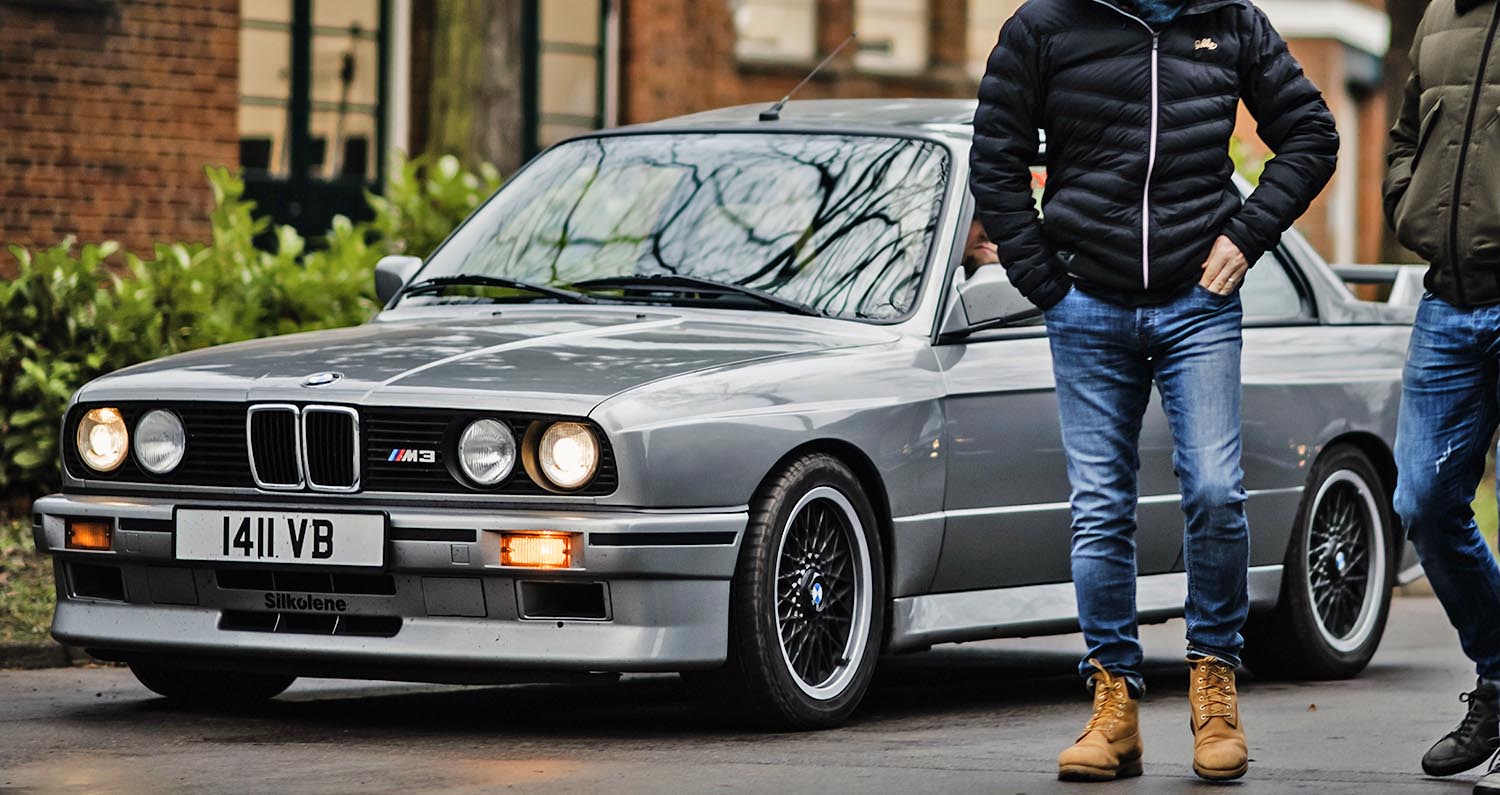
300 hp for competitive racing
However, many of them immediately disappeared again into garages and workshops to be given a new outfit. After all, the M3 had been designed as a racing car, and now was the time to prove that it really could “race”. A World Touring Car Championship was held for the first time in 1987. And that was exactly what the M3 had been built for. But not quite in the guise in which it was seen on the streets. Instead of 200 hp, the 2.3 litre engine delivered up to 300 hp at 8,200 rpm in the racing version. This put it on a par with the BMW M635CSi. BMW didn’t line up on the starting grid with its own team but supported a number of famous racing outfits like Schnitzer, Linder, Zackspeed and Bigazzi. Drivers like Markus Oestreich, Christian Danner, Roberto Ravaglia and Wilfried Vogt took the wheel, and Anette Meeuvissen and Mercedes Stermitz formed a ladies’ team.
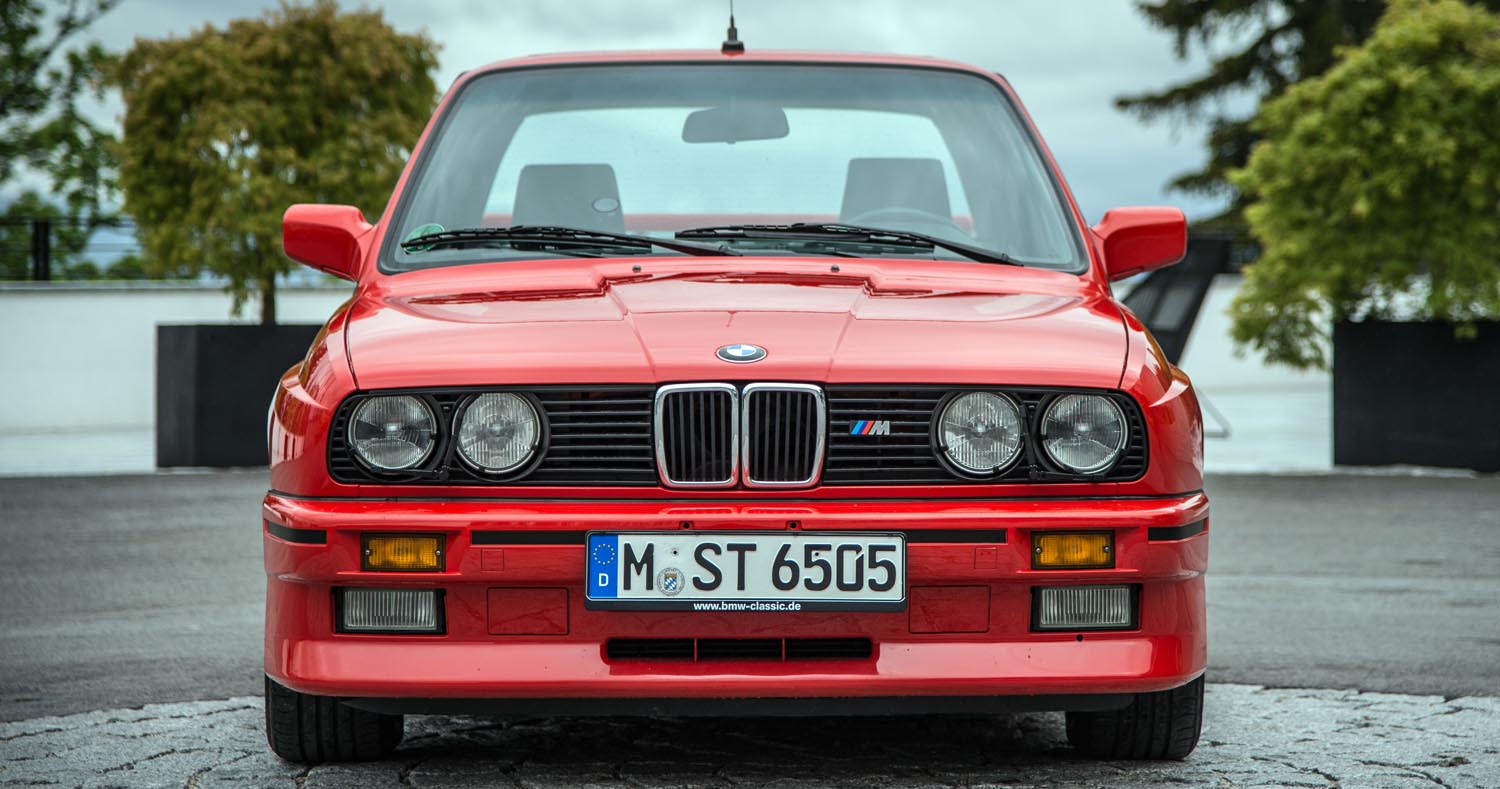
Roberto Ravaglia in a BMW M3: first and last World Touring Car Champion
The first race for the 1987 World Touring Car Championship started in Monza on 22 March 1987 – and ended with a sensation. All the M3 cars were excluded from the placings. The vehicles were checked under chaotic conditions and disqualified because of sheet-metal thicknesses that were allegedly contrary to the regulations. BMW appealed but the sports tribunal decided that the appeal had been lodged too late. There was no longer any talk of infringements of the rules. All the brouhaha naturally didn’t have any effect on the result of the championship. At the end of the season, Roberto Ravaglia was standing on the podium as the first World Touring Car Champion. But that was only the pinnacle of the success list. Wilfried Vogt took the title of European Champion. Altfried Heger came in second – both driving a BMW M3. Eric van de Poele won the prestigious German Touring Car Championship. Moreover, the most sporty 3 Series car was also winning competitions off the race track. An M3 crossed the finishing line in first place in the Corsica Rally and secured a victory for BMW after a gap of 14 years in a race for the World Rally Championship.
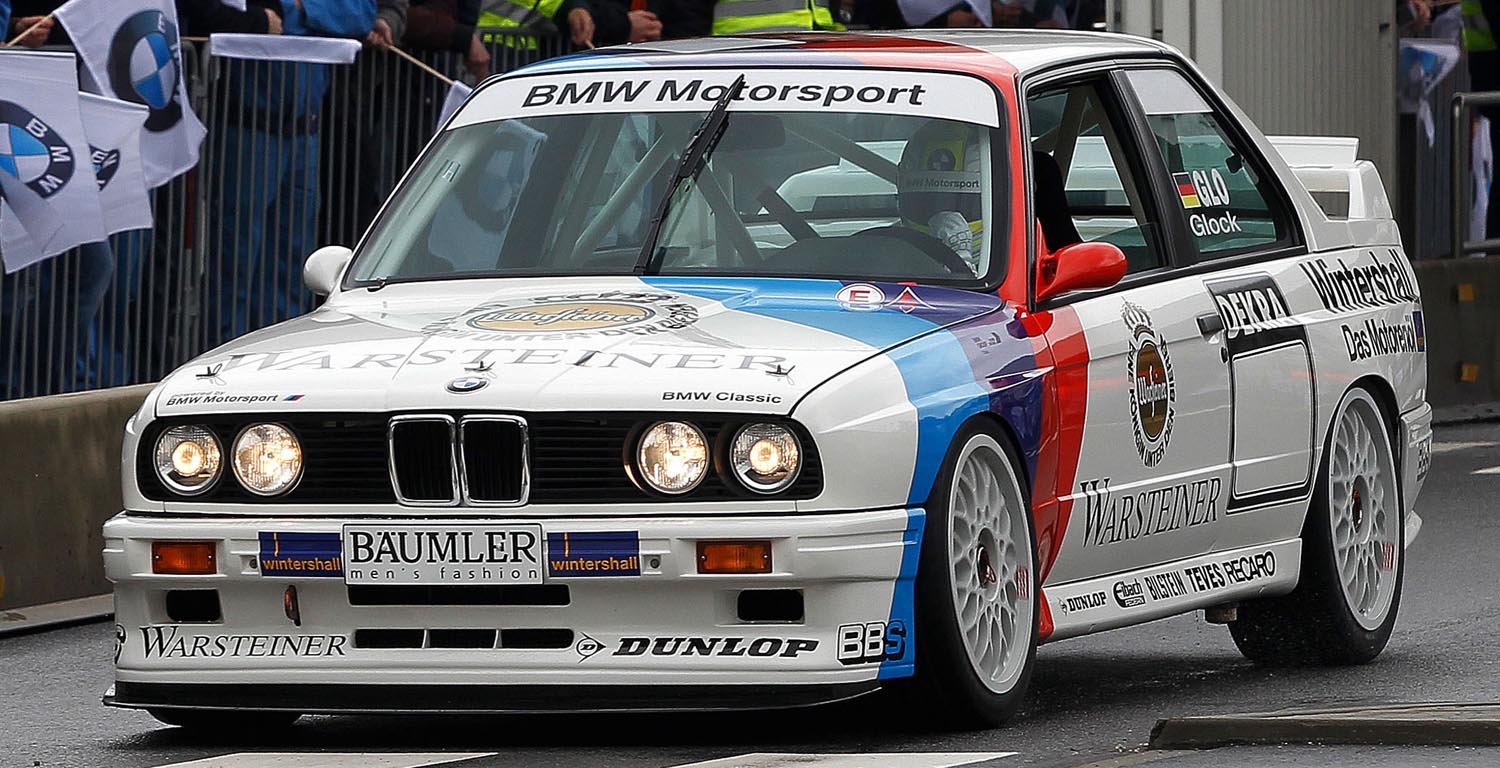
“Most sporty saloon of the year”
The well-informed public rewarded the success story of the newcomer when readers of racing magazine sport auto voted the M3 “the most sporty saloon of the year”. The high-profile 3 Series also became increasingly exciting in its civilian version. In 1987, it was equipped with electronically adjustable shock absorbers. Drivers had a knob beside the handbrake lever which allowed them to choose between the adjustments sport, normal and comfort. Control lamps on the instrument panel displayed the setting that had been selected.
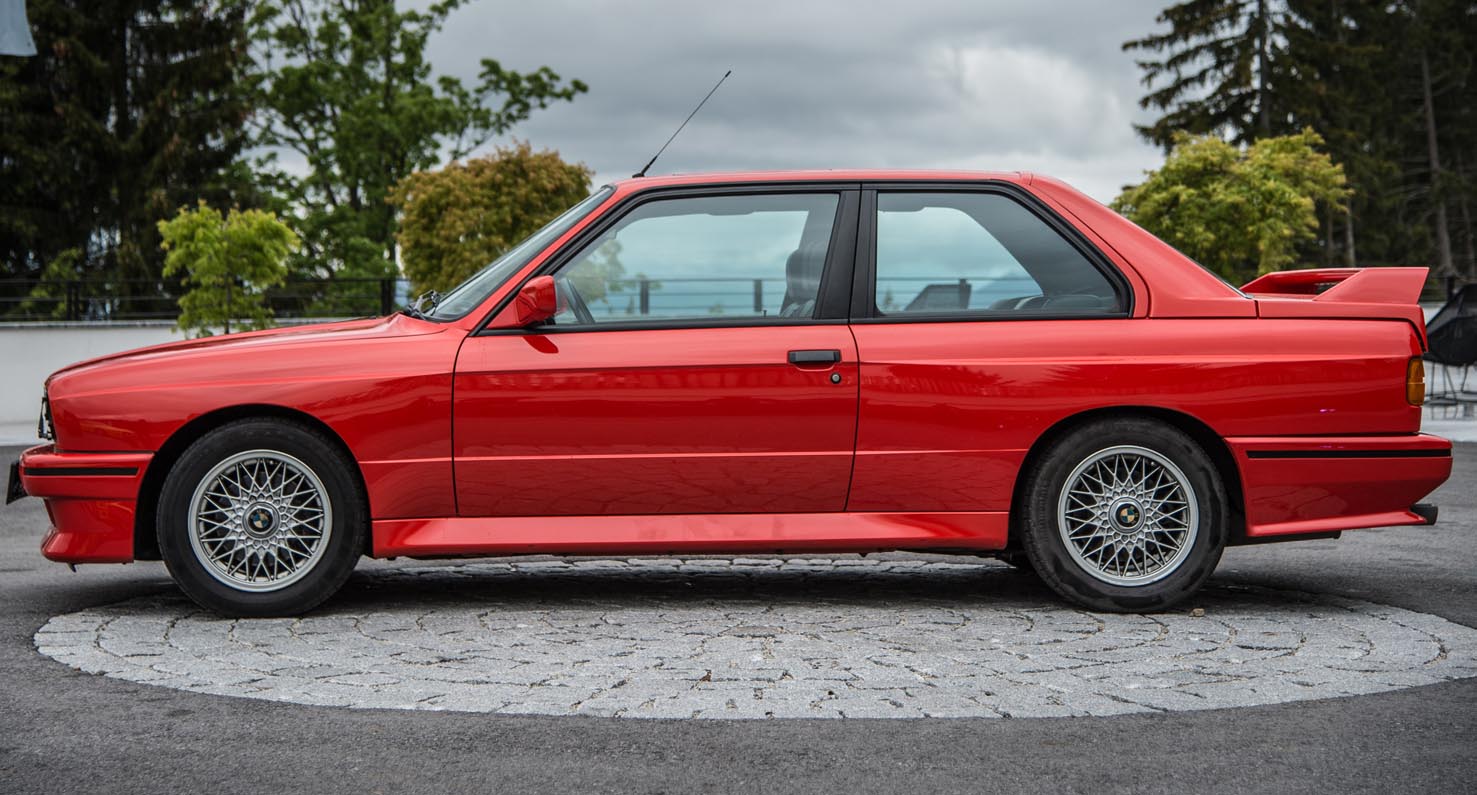
The resilience of the four-cylinder under tough operating conditions on the race tracks rewarded private customers with two very special offers in 1988. BMW created an exclusive special series of even more powerful M3 cars with the suffix “Evo” for Evolution. Identifiable by even more opulent spoilers, this special M3 was powered by a 220 hp engine, while the ‘cat’ version of the standard M3 generated 215 hp. The second package was intended for a very special circle of customers: an open M3 based on the 3 Series Convertible. The 215 hp convertible had a top speed of 239 km/h and was by far the fastest open-top four-seater to be bought in a limited series.
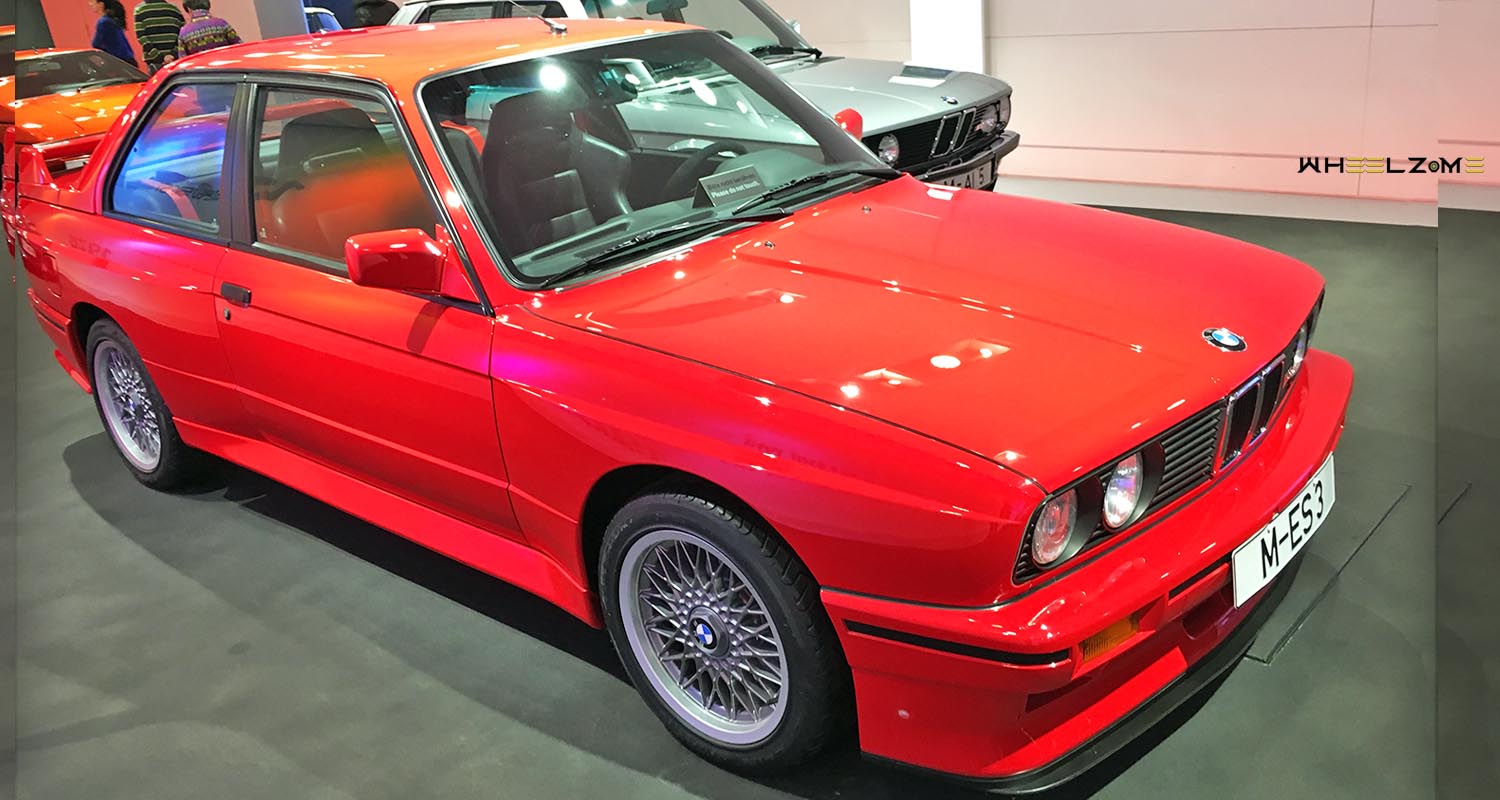
24 Hour Race: M3 double victory on the Nürburgring
In the meantime, the BMW M3 was really getting going on the race track. The two-door car didn’t just win the German Touring Car Championship. It also took the national titles in France, England and Italy. In the following year, the BMW racing car was equally difficult to beat. The M3 packing 300 bhp beat its touring-car competitors in Germany, Belgium, Holland, France, Italy, Finland, Spain, Sweden and Yugoslavia hands down. Belgian Marc Duez battled through the Monte Carlo Rally with an M3 and took eighth place as best driver in a car without four-wheel drive. Altfried Heger and Roberto Ravaglia crowned the success story with a sensational twin victory at the 24 Hour Race on the Nürburgring.
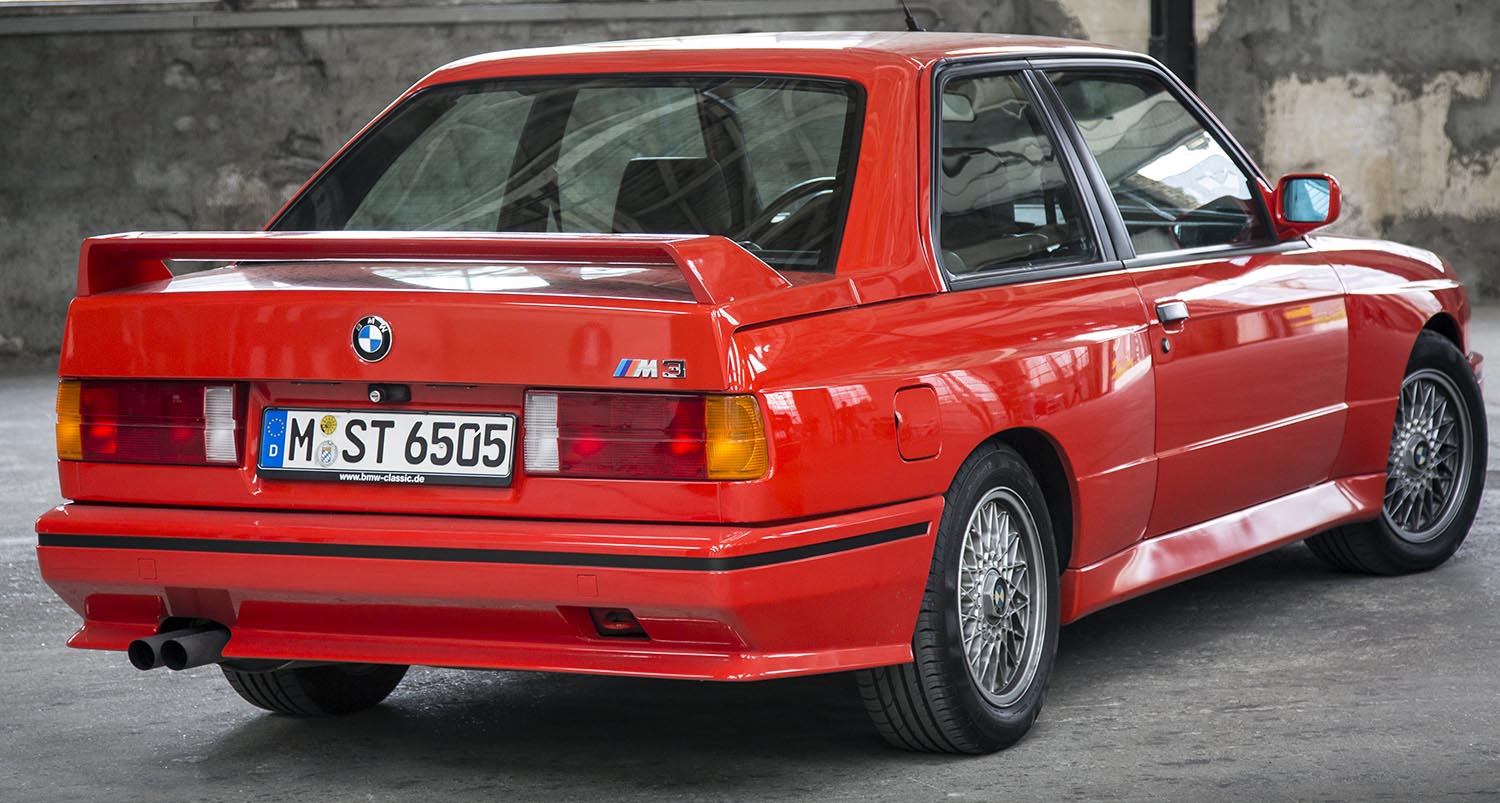
Specials: Sport Evo and 320is
The M3 had a commanding presence on the international touring car racing scene for five years. It became the most successful touring car of all times by winning the champion’s title several times in the European Touring Car Championship and twice in the German Touring Car Championship. There were also numerous further victories and championship wins at international level. Depending on the competition rules, the four-valve engine had to be adapted to national regulations. For example, the capacity for England was limited to 2 litres while for Germany and France it was raised to 2.5 litres with effect from 1990. This enabled the fourcylinder to deliver up to 360 bhp. Depending on the version and the deployment profile, engine and mixture management also varied. Air intake was managed by independent throttle valves and valve control systems. In the version with the biggest capacity, the engineers of BMW M GmbH went up against the limits of what was feasible. In order to make full use of the 2.5 litre limit, they not only increased the stroke of the 2.3 litre unit from 84 to 87 millimetres, but also increased the bores of the four cylinders from 93.4 millimetres each to 95.5 millimetres. This reduced the width between the cylinders to just 4.5 millimetres. But success proved the development engineers right. The engines withstood the stresses and strains of touring-car racing even at maximum output without any problem.
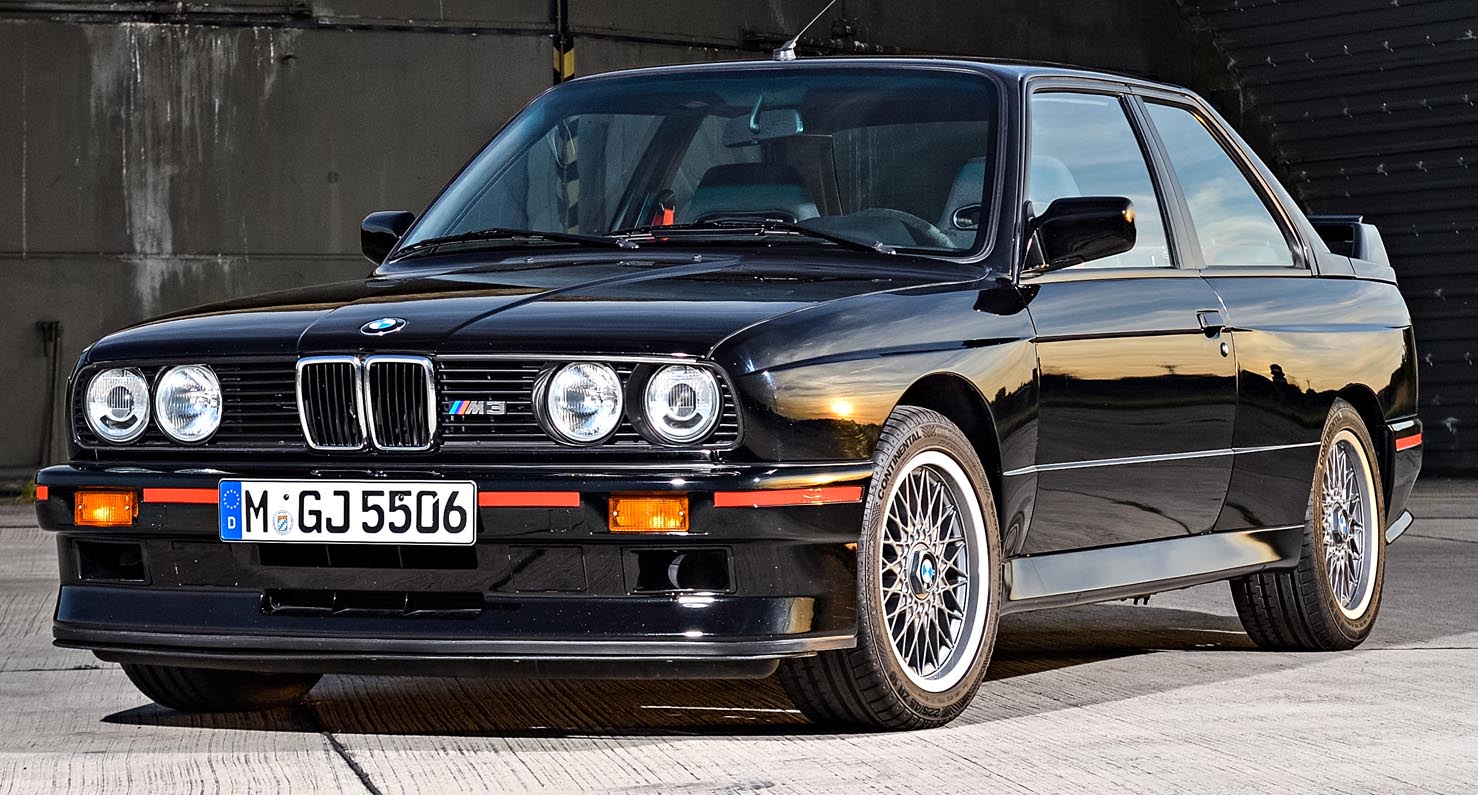
A civilian version of this original M3 with the biggest capacity drove onto the roads with the additional name of Sport Evolution. Its characteristic feature was the two-tier rear wing. This 238 hp sports car was limited to 600 units. A version of the two-litre engine used in Italy was also marketed for everyday use. It was designated 320is, packed 192 hp and was sold in Italy and Portugal to come below the statutory capacity limits valid here for highly taxed luxury cars.
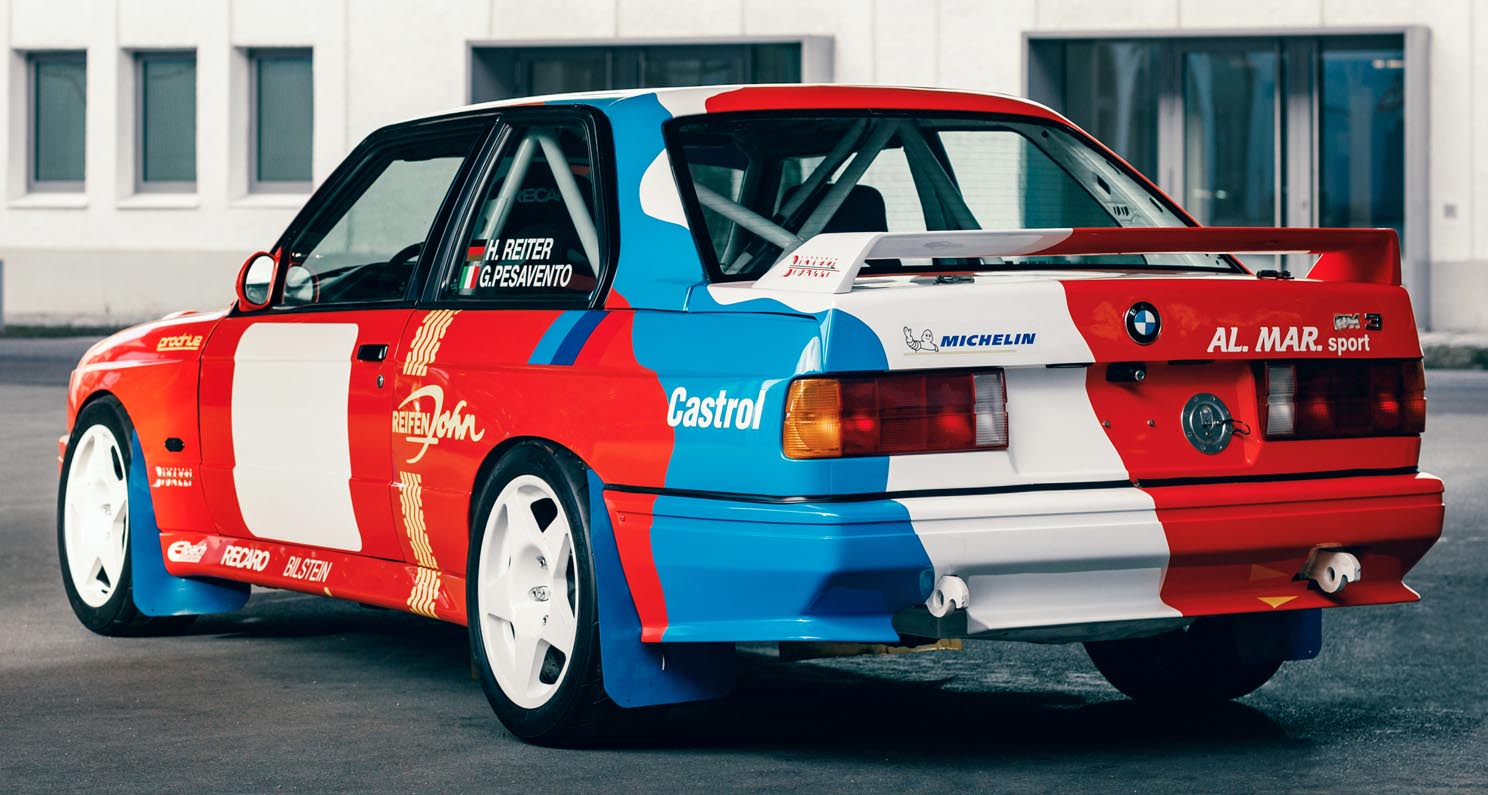
By the end of 1991, 17,970 BMW M3 cars of the first generation had left the manufacturing facility, including 786 convertibles. Nobody had anticipated this overwhelming success, either on the road or on the racing circuit. Continuing this success was an obvious step – with the new 3 Series that had already been launched on the market in 1990.
